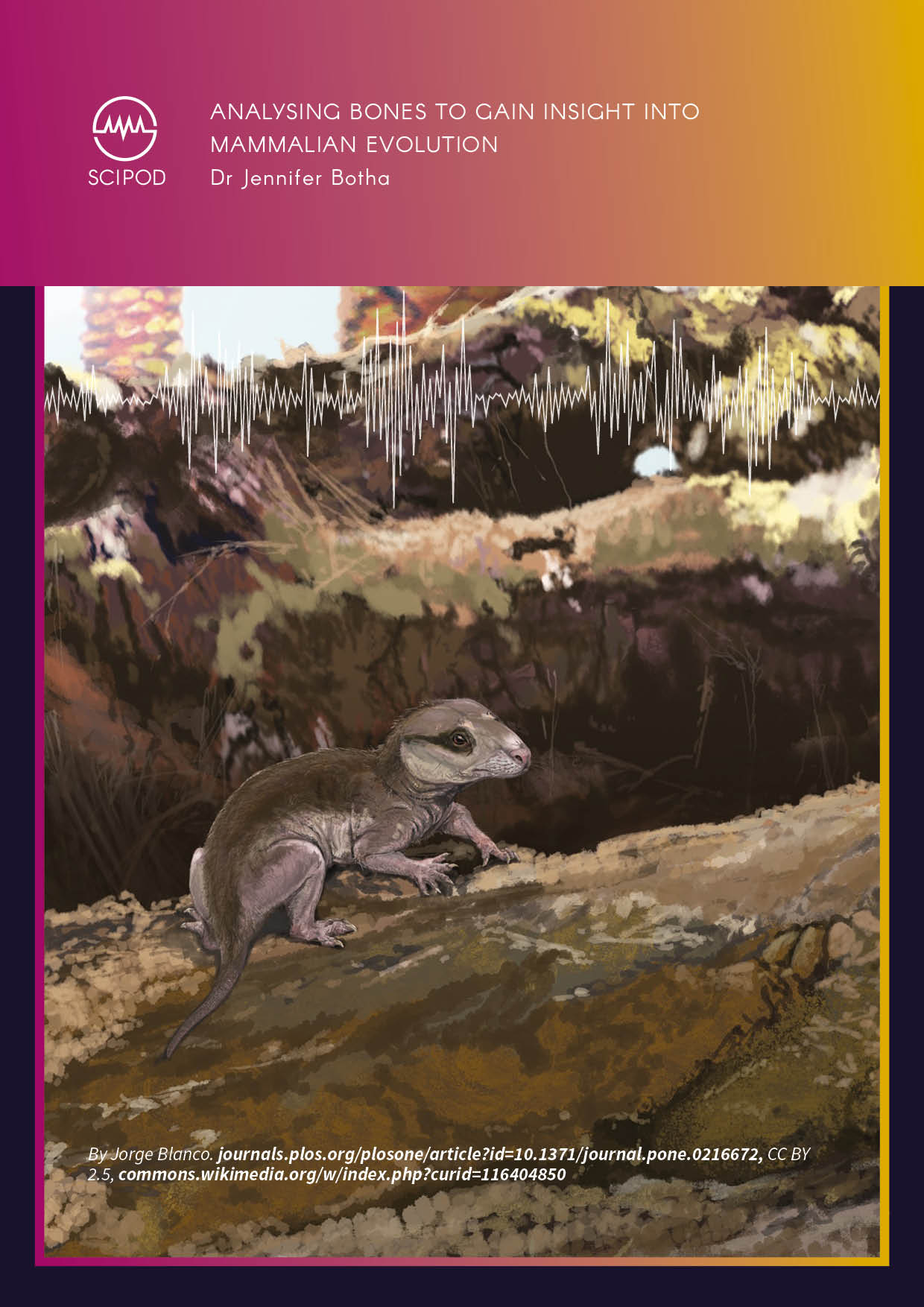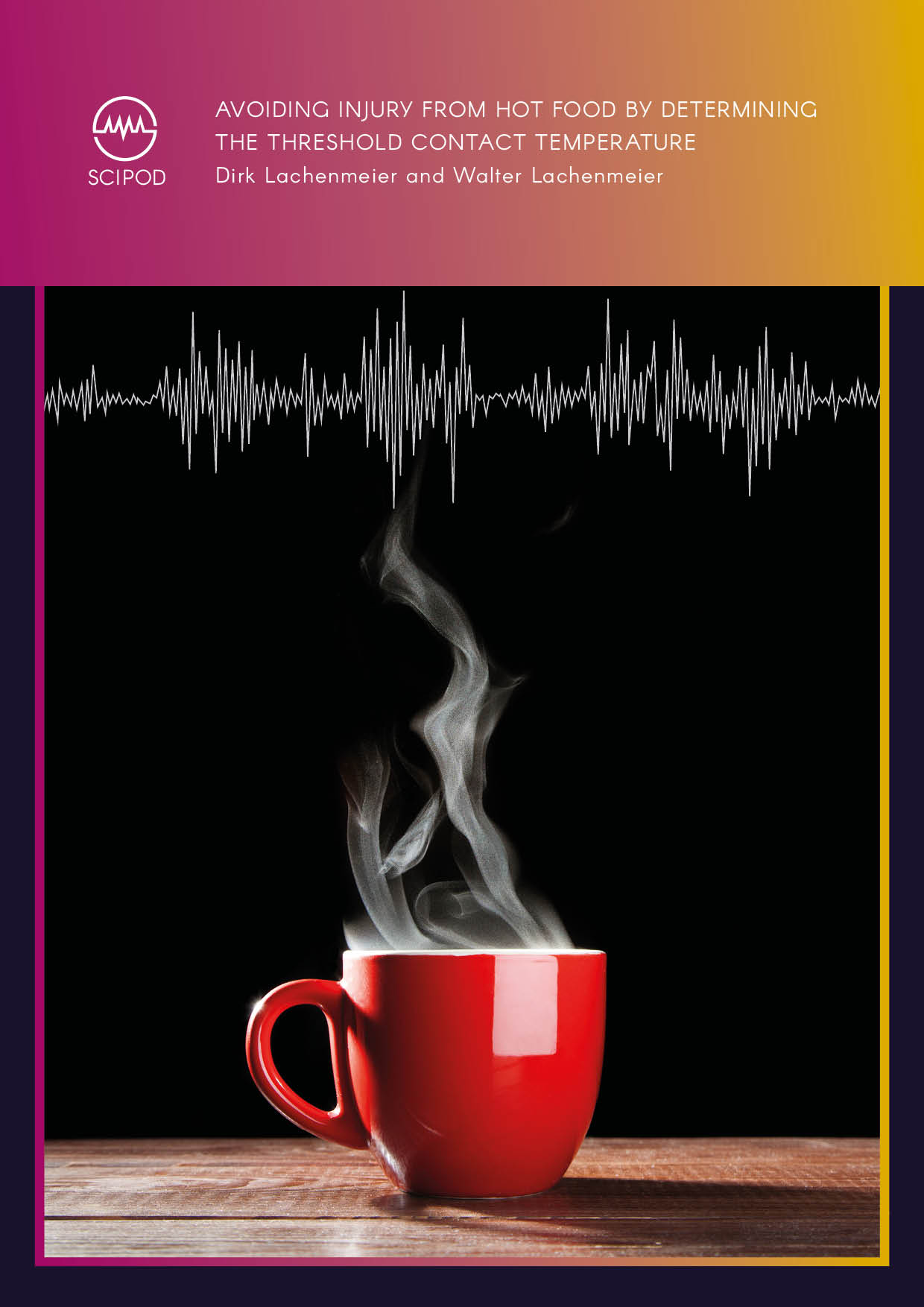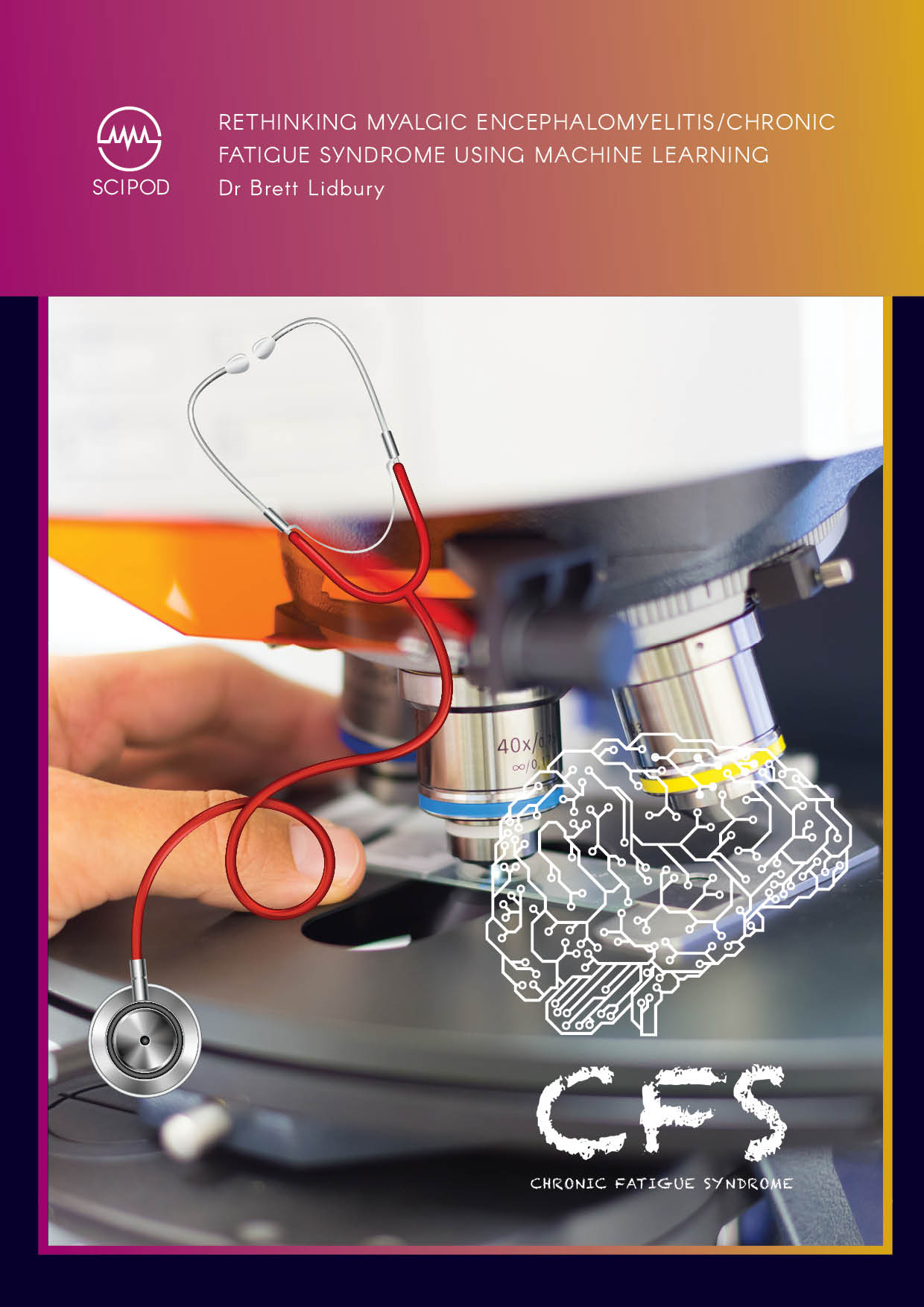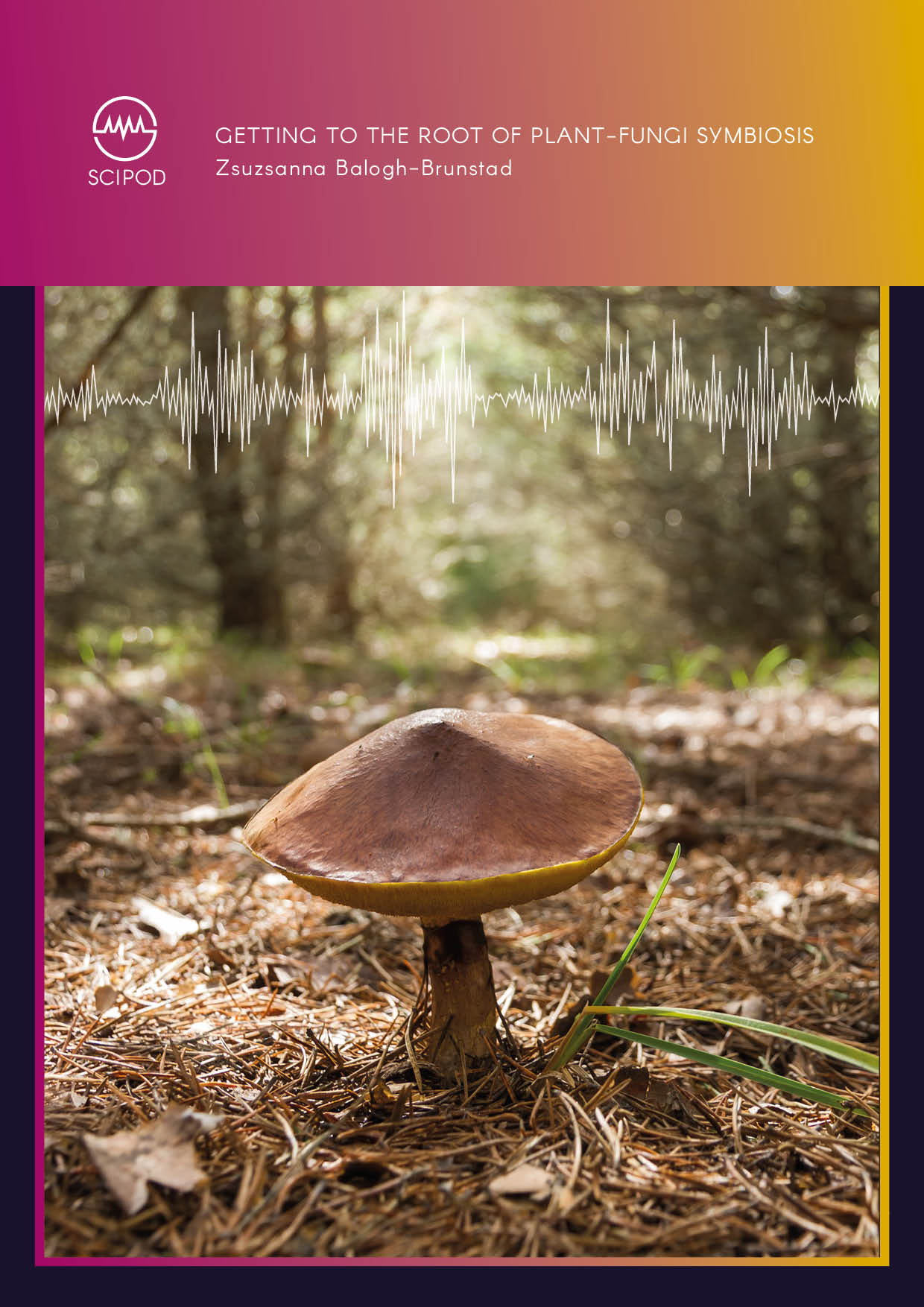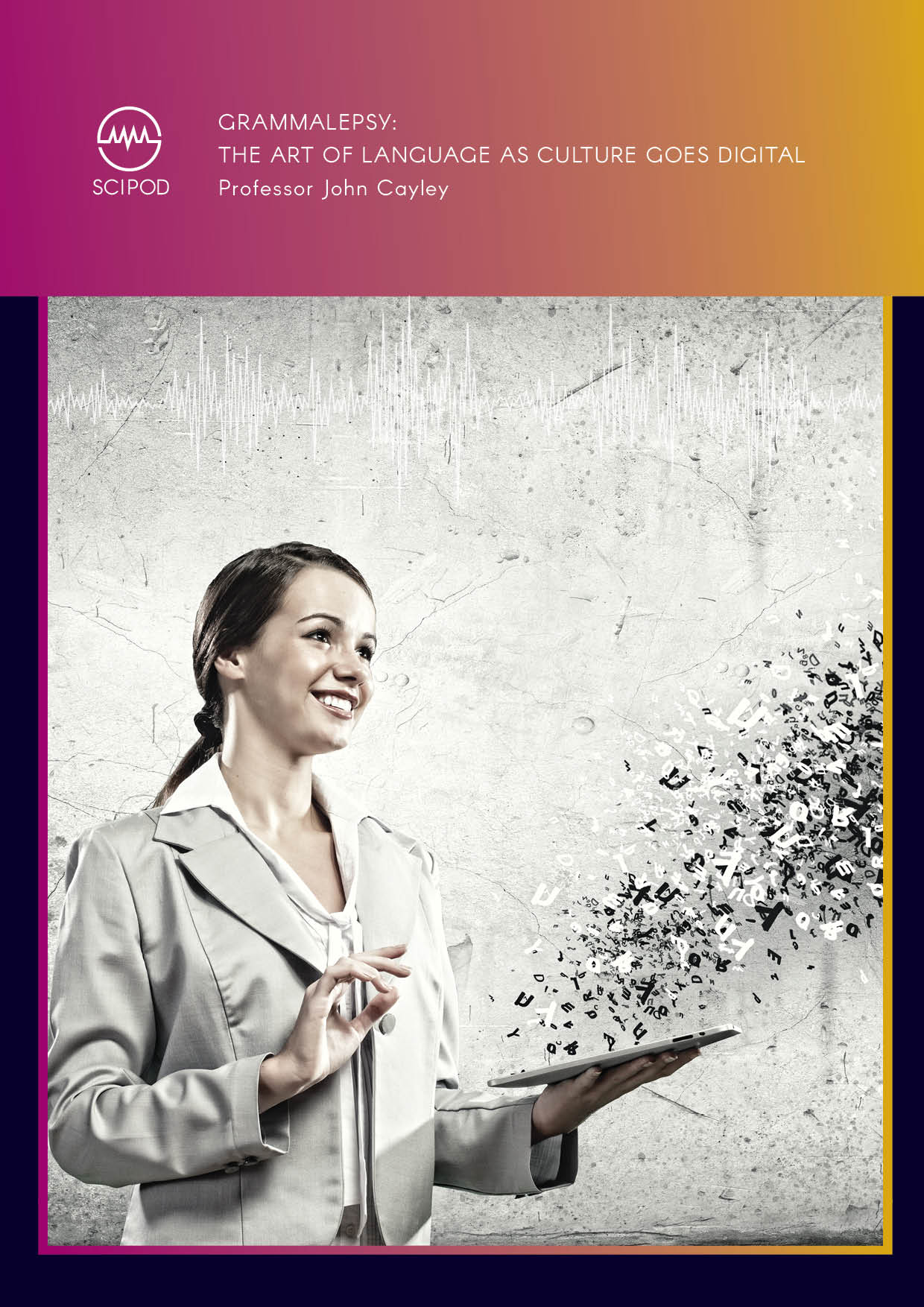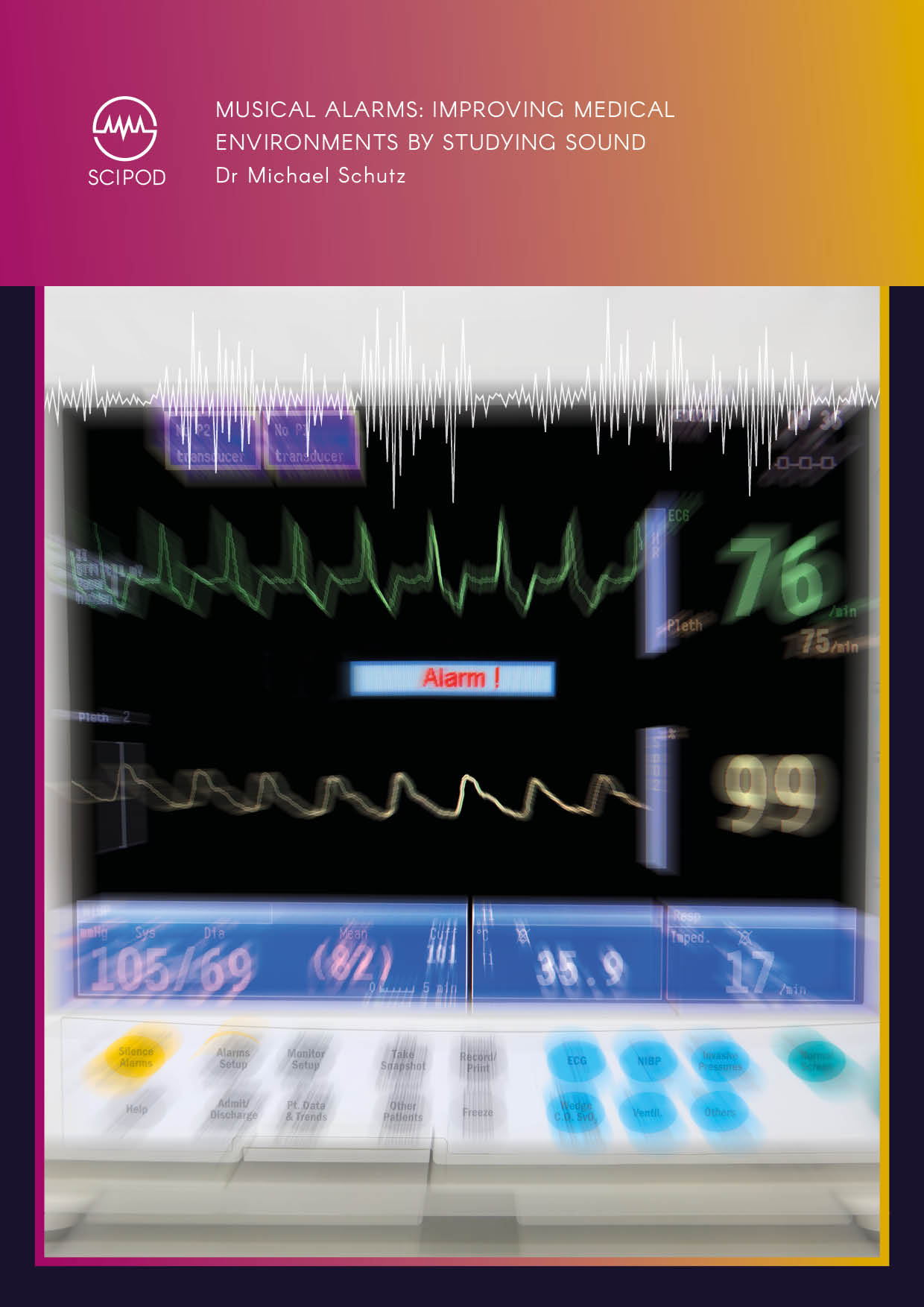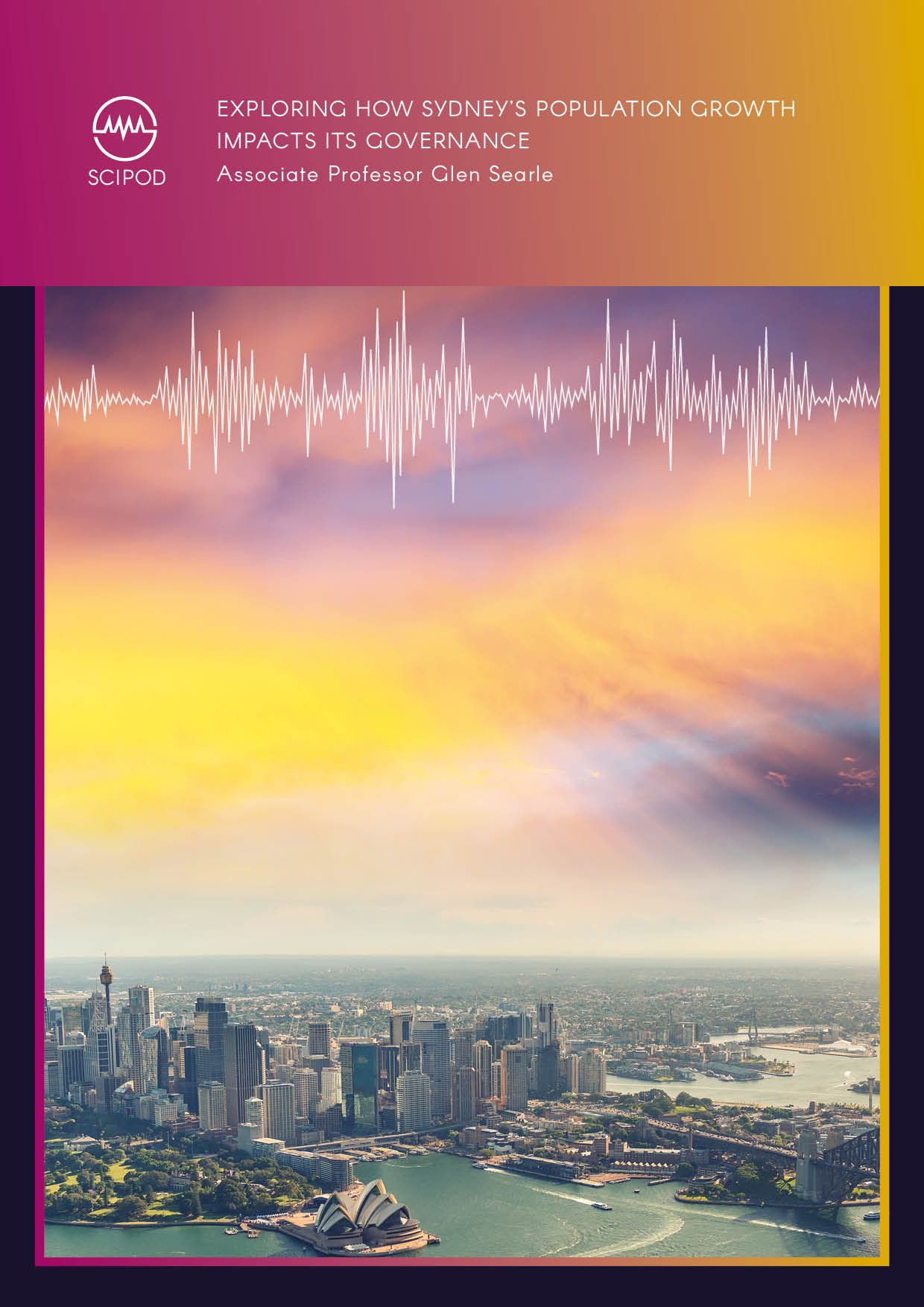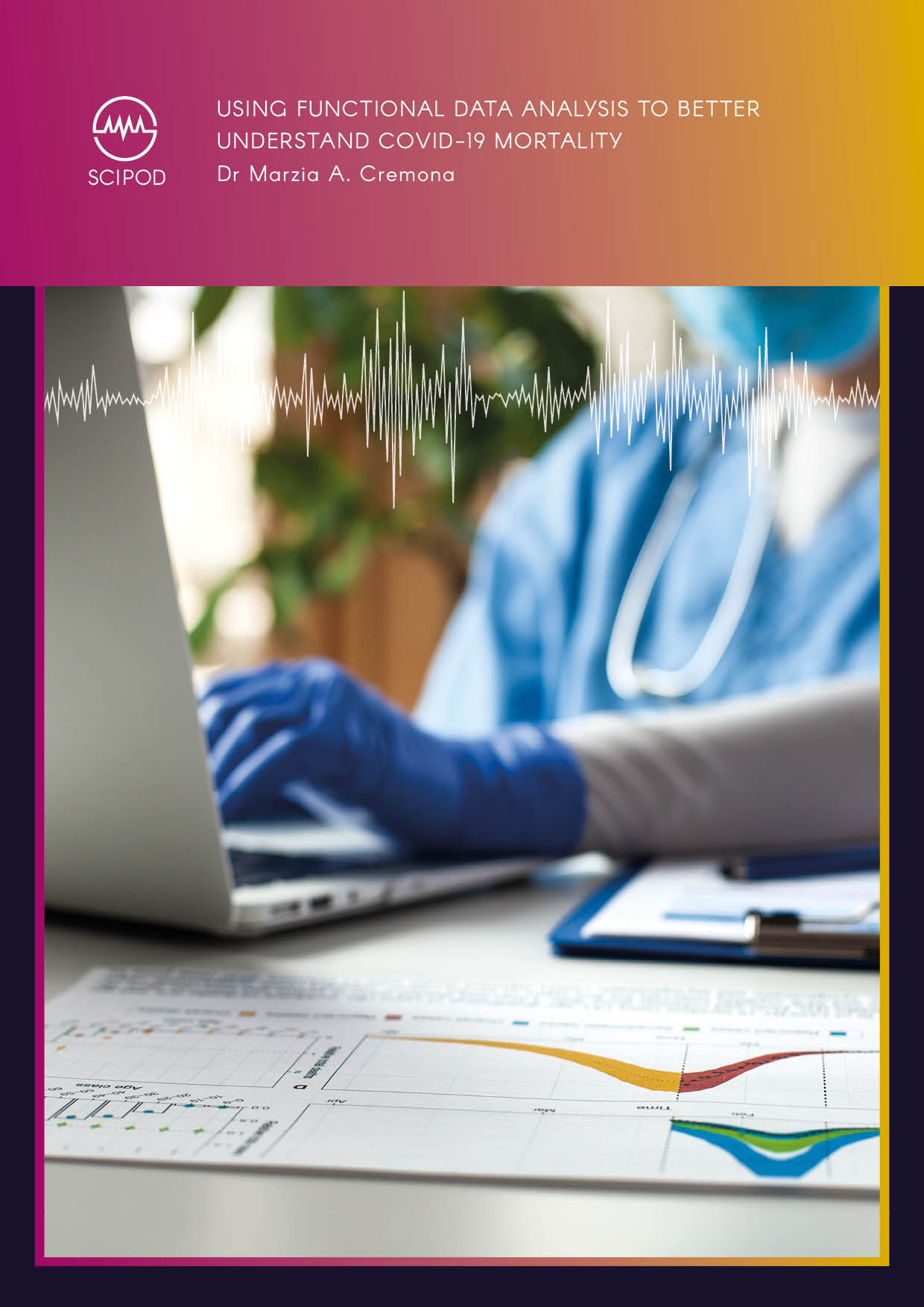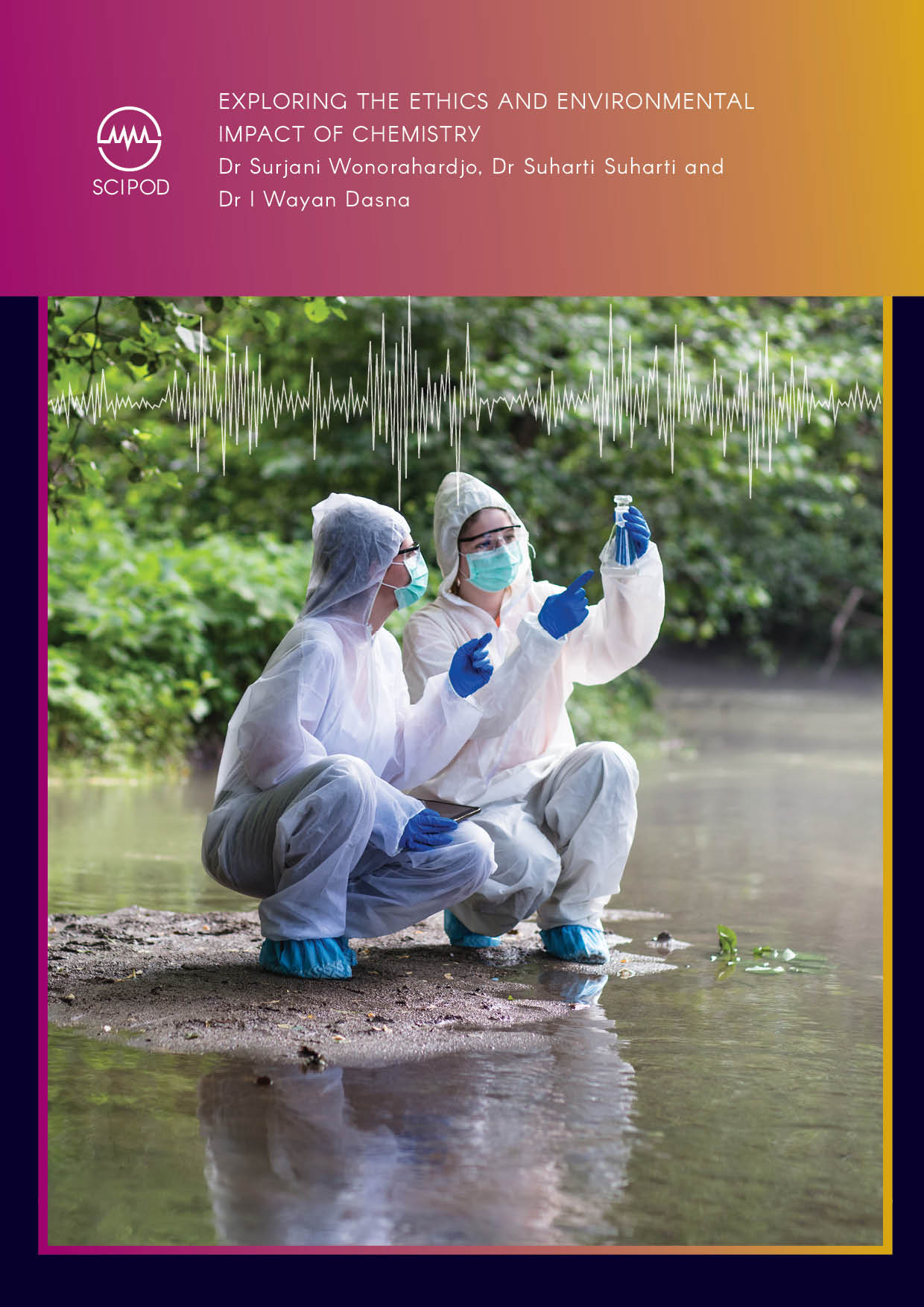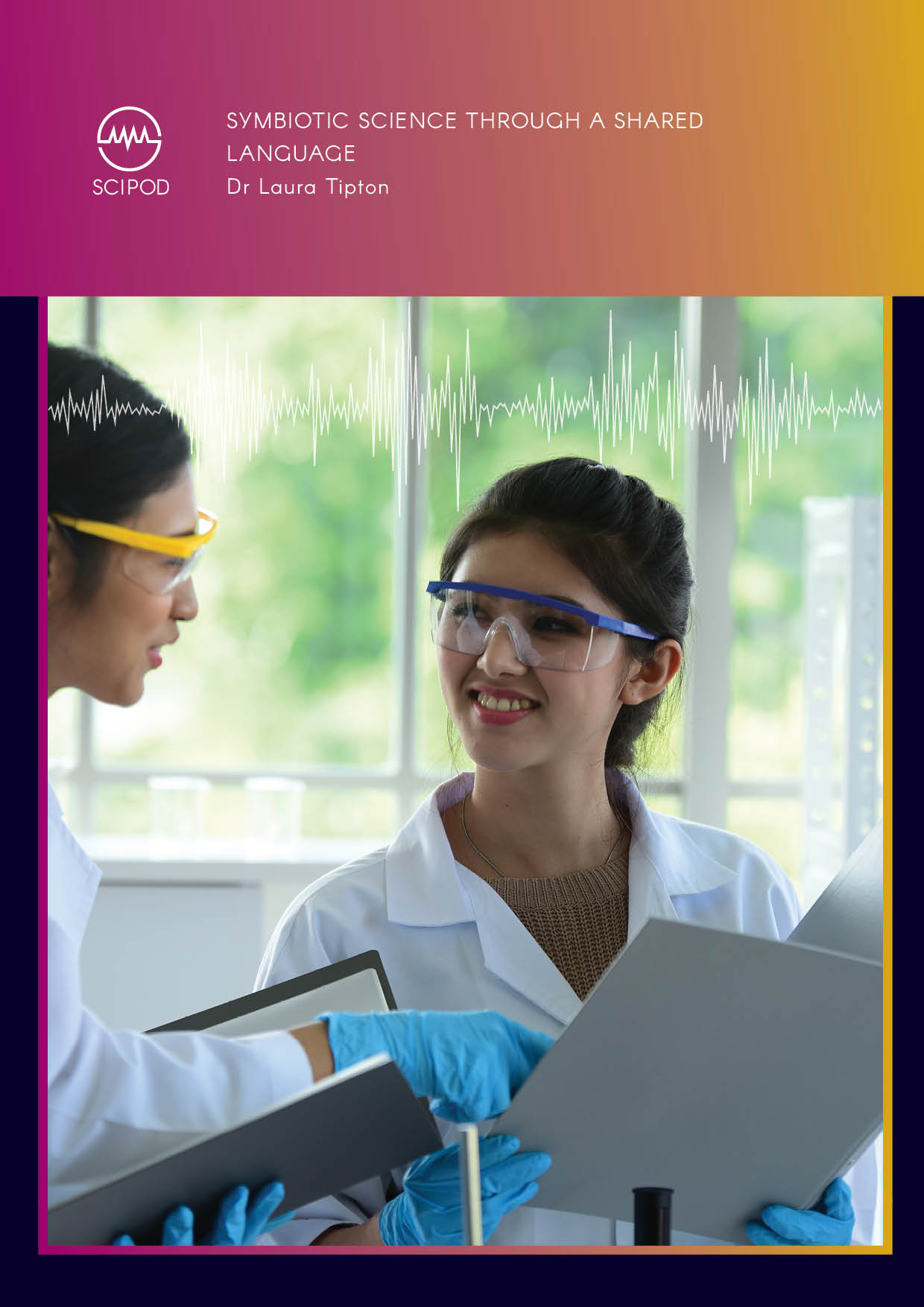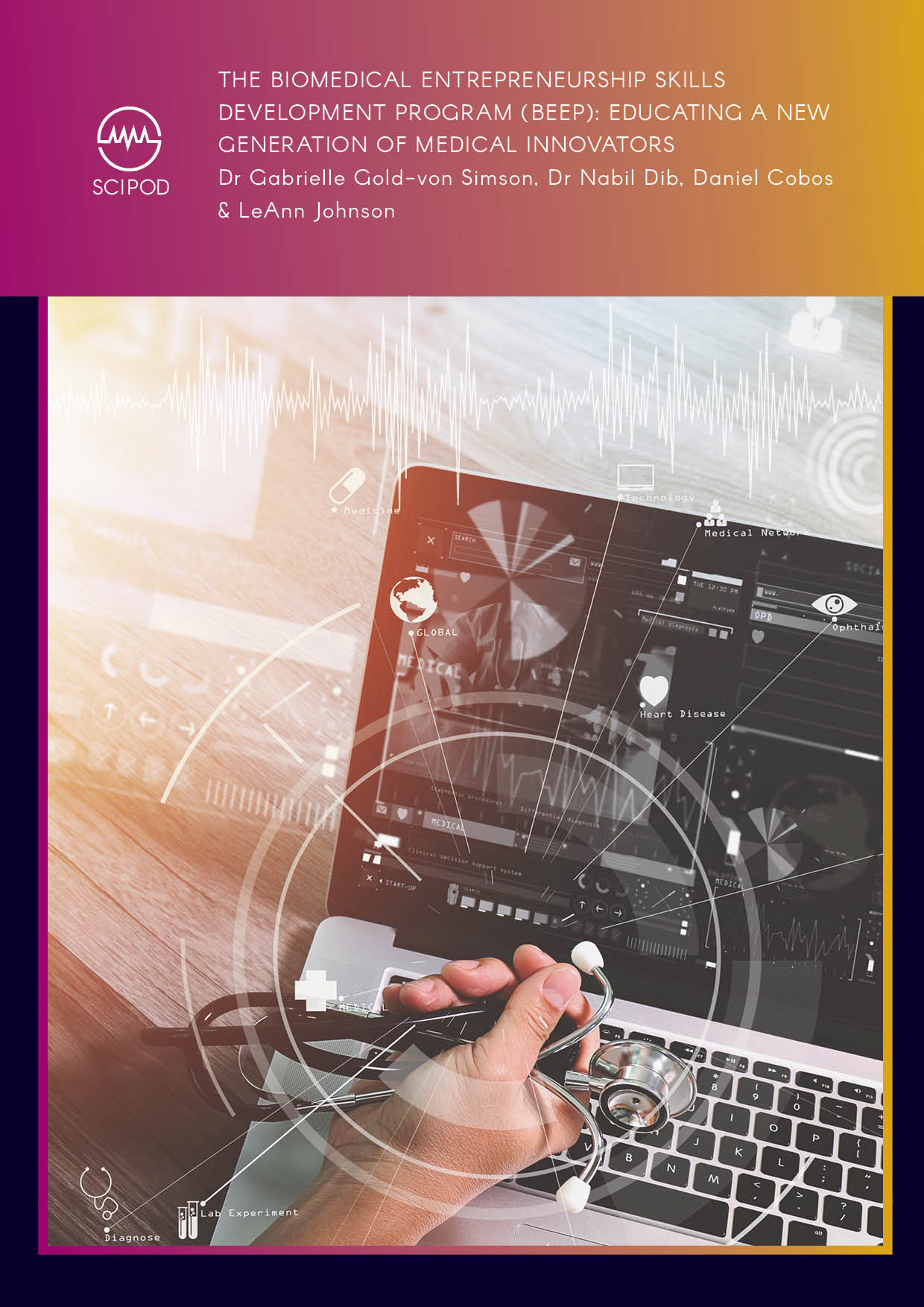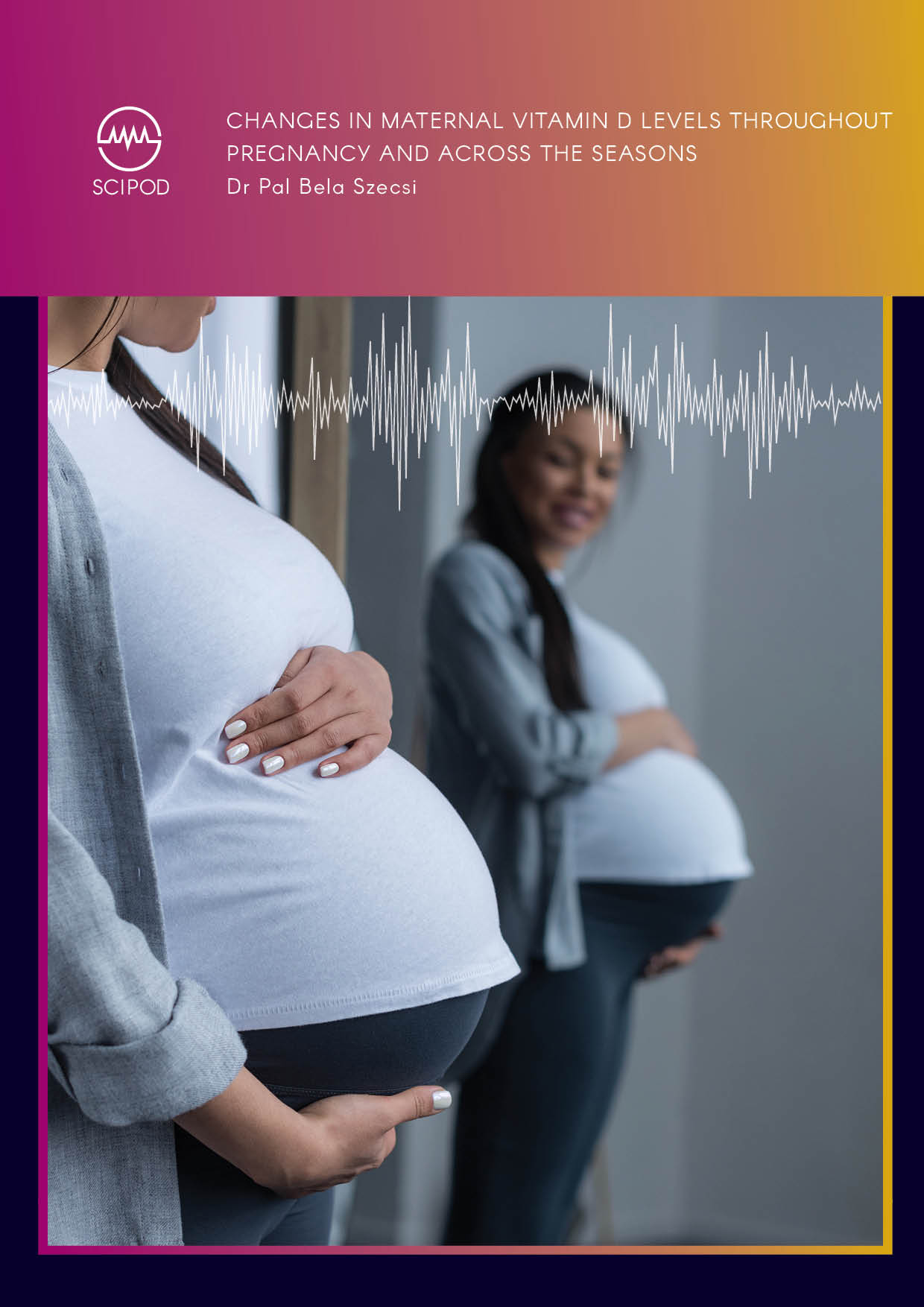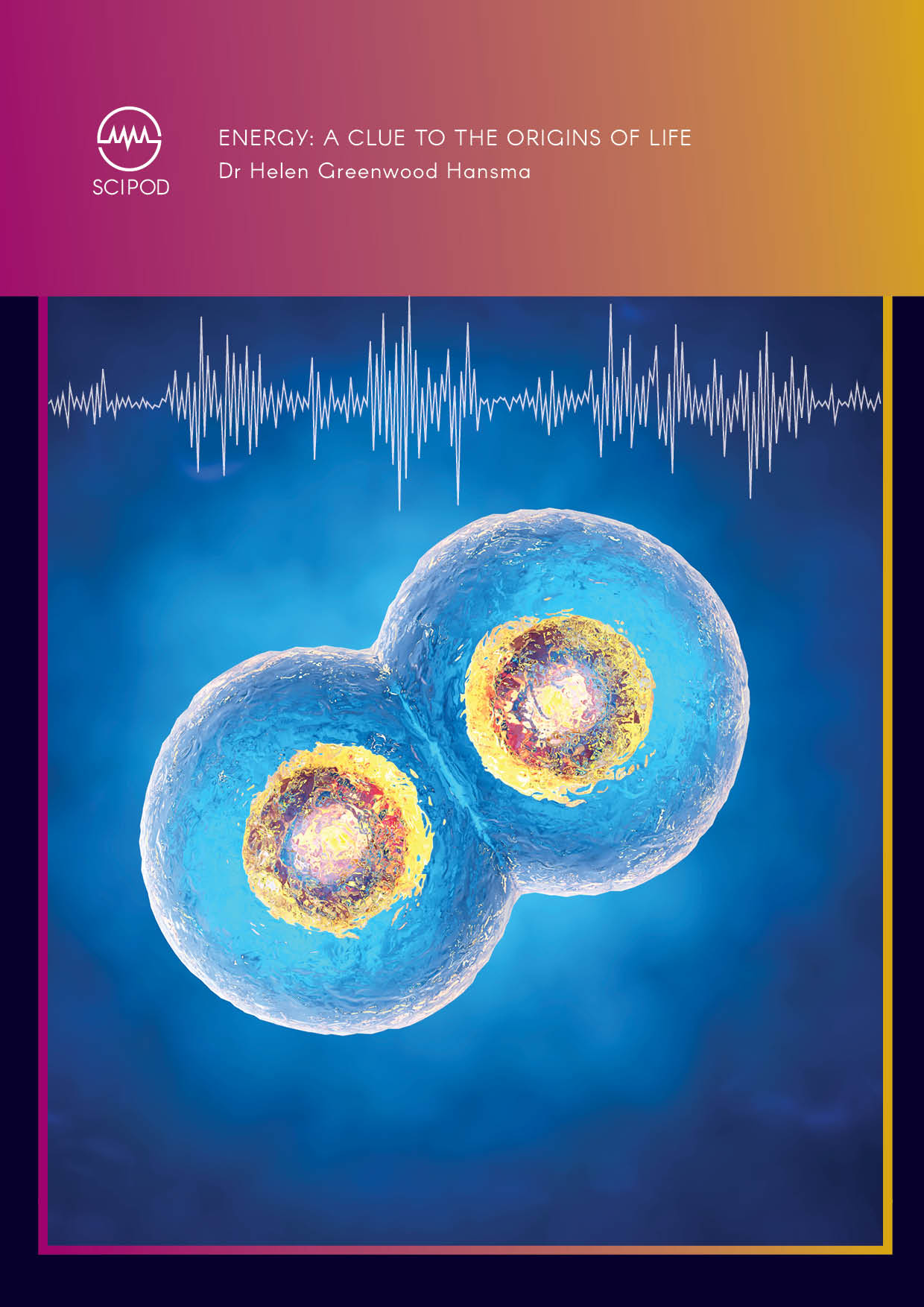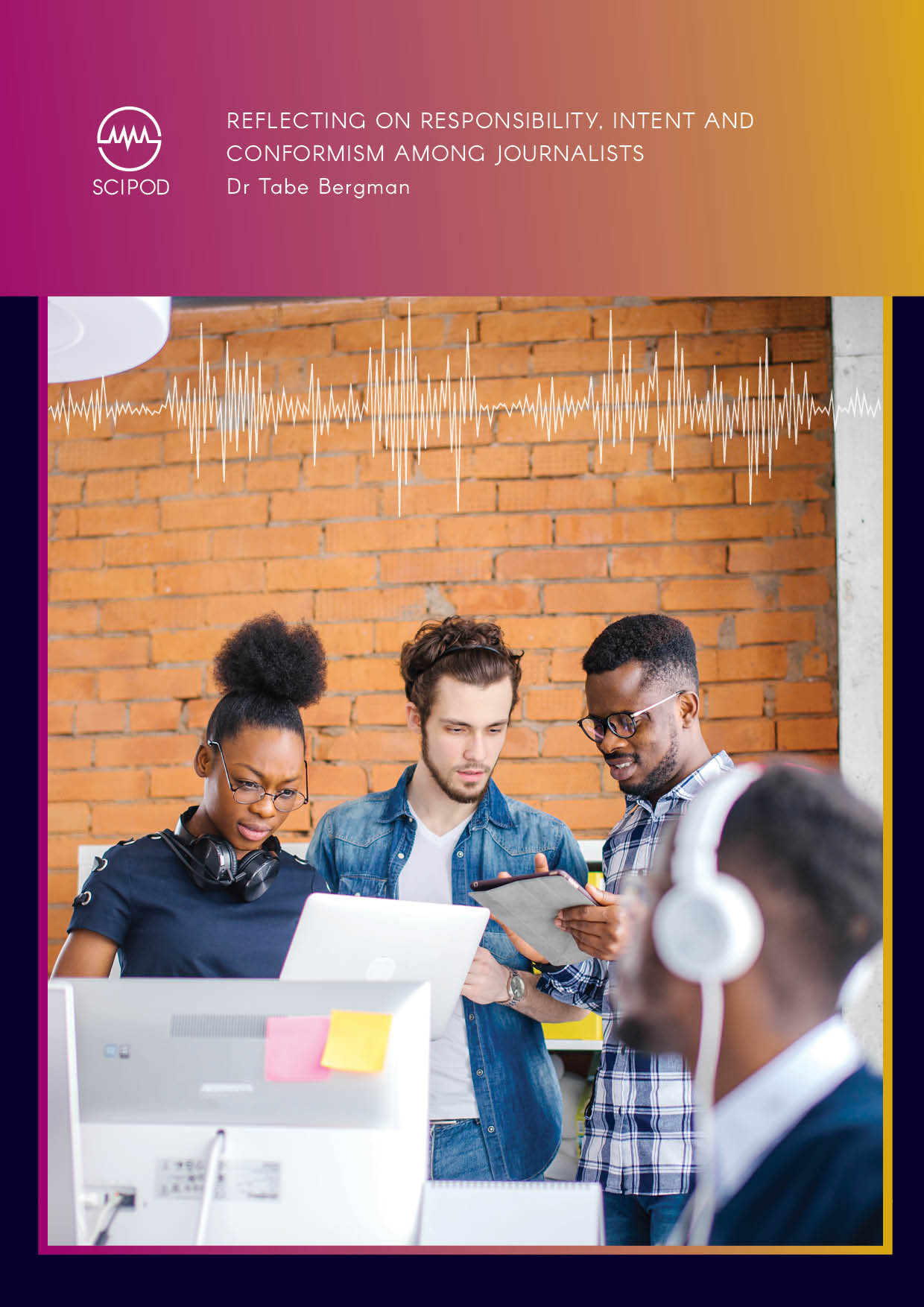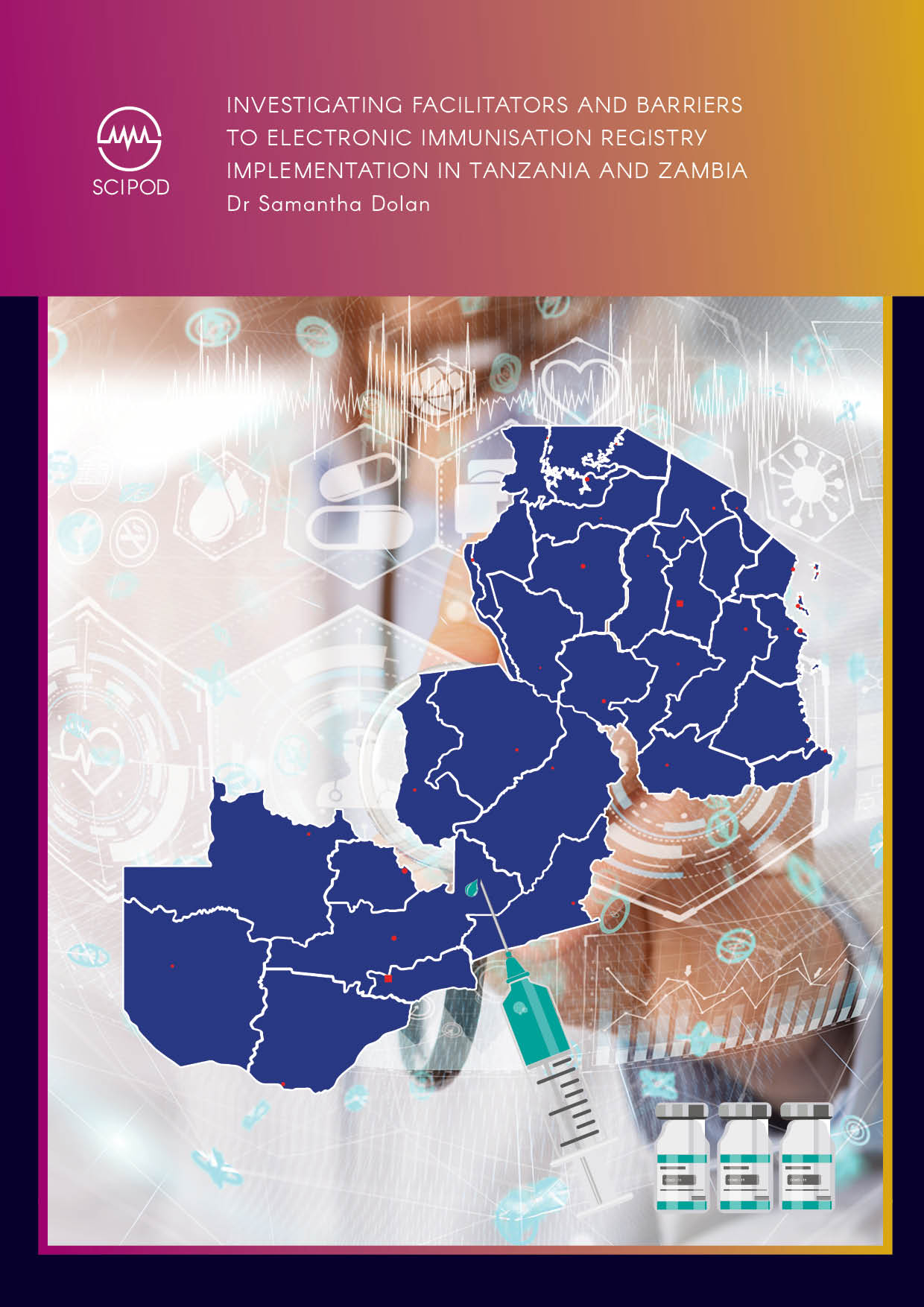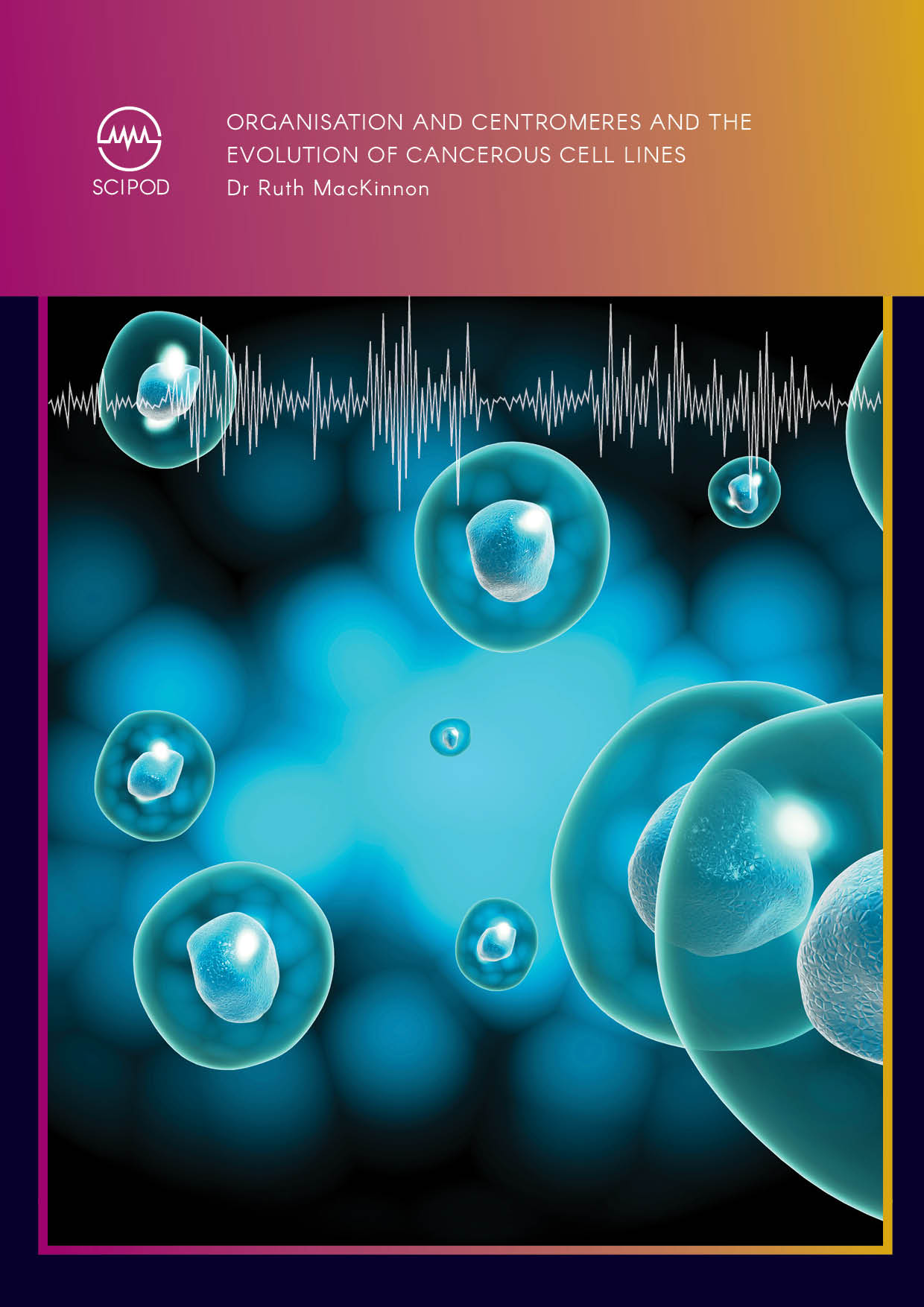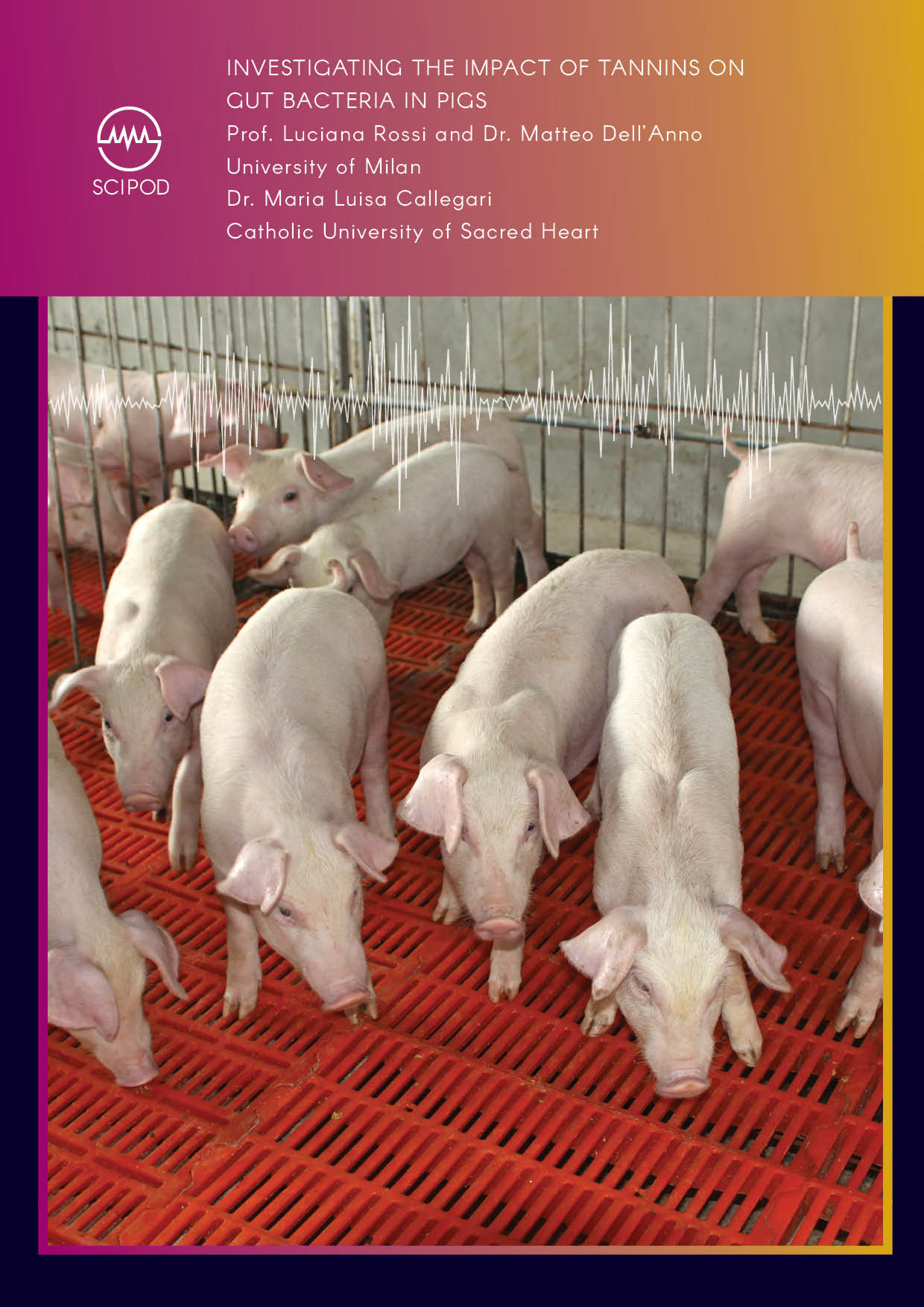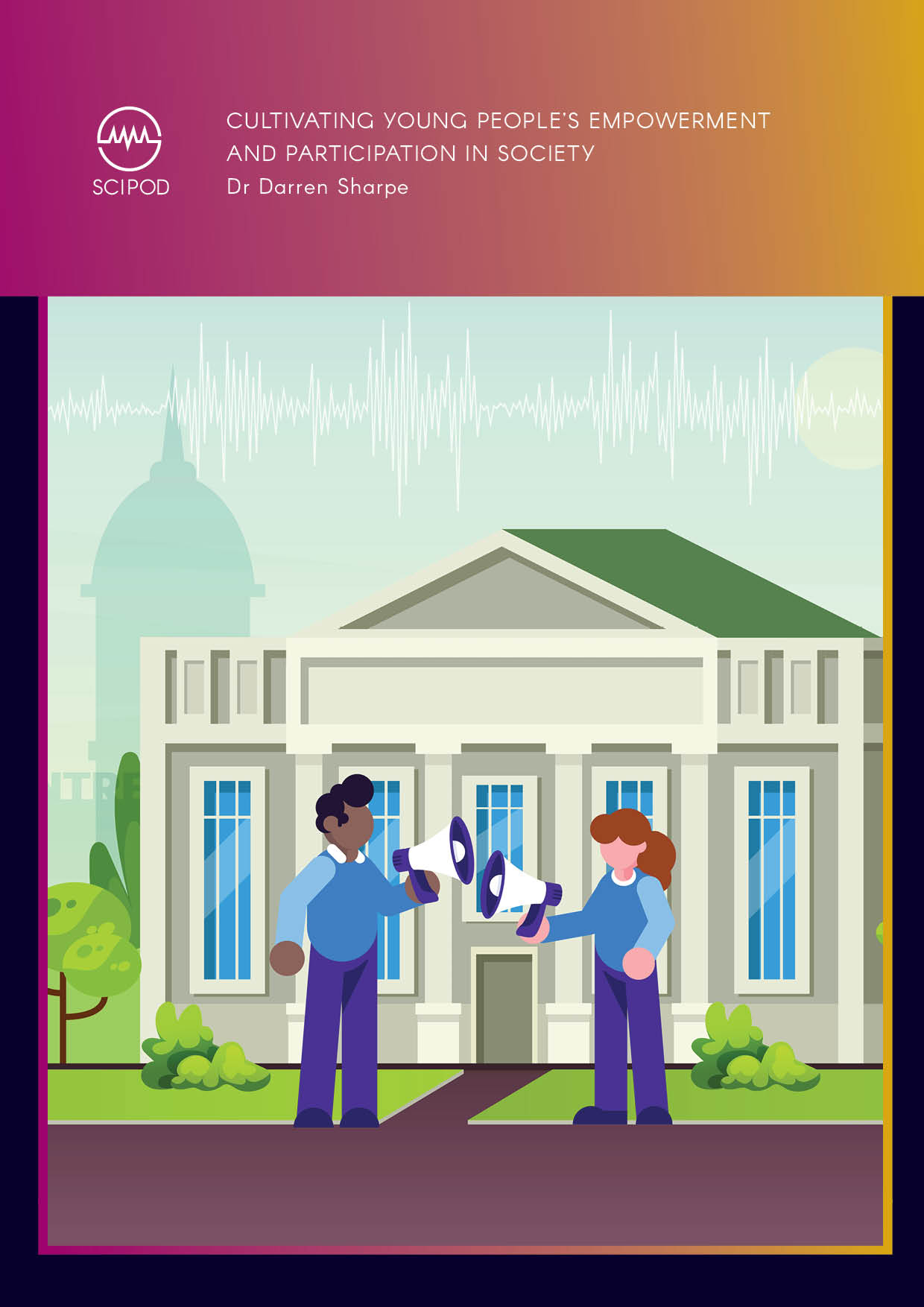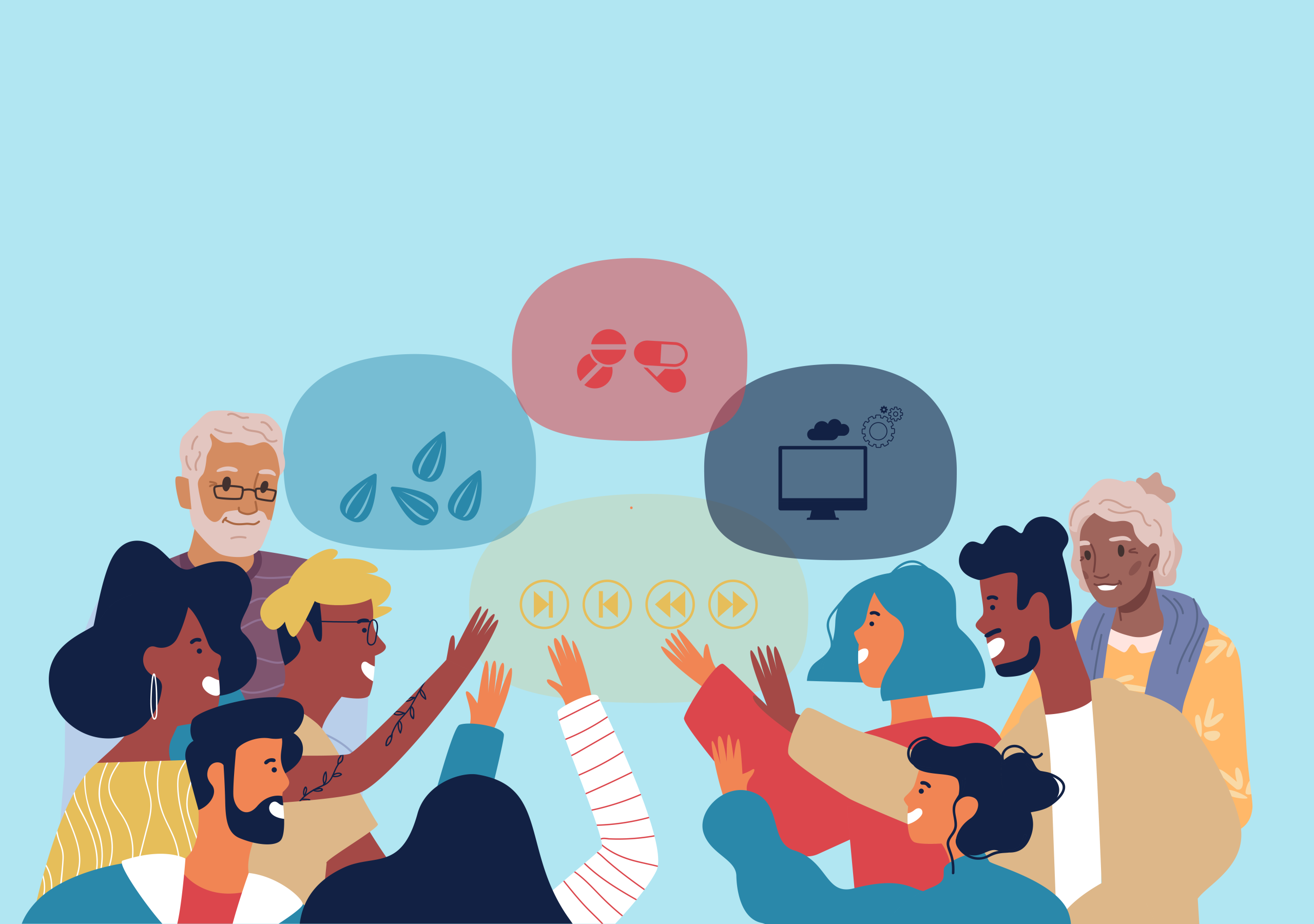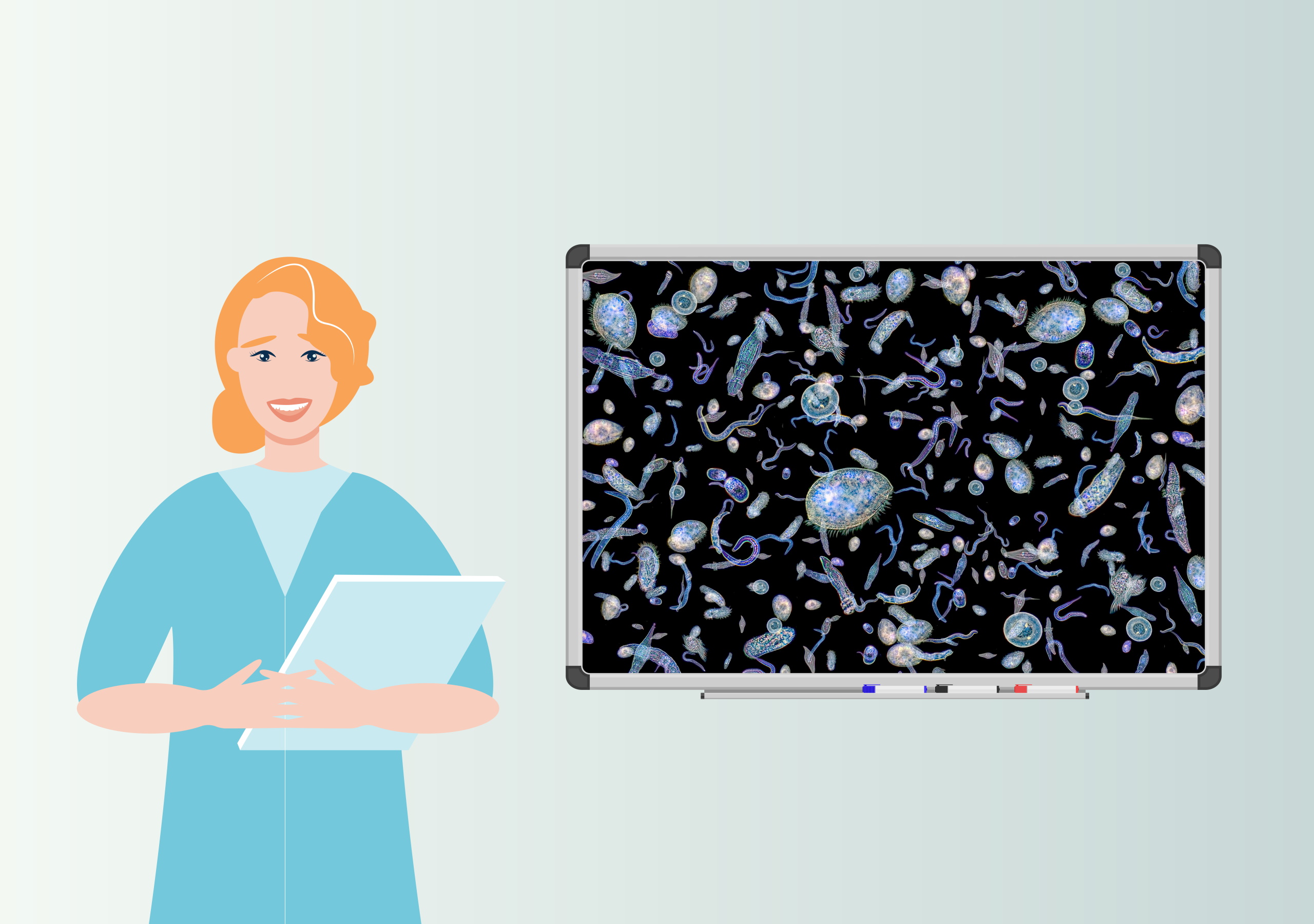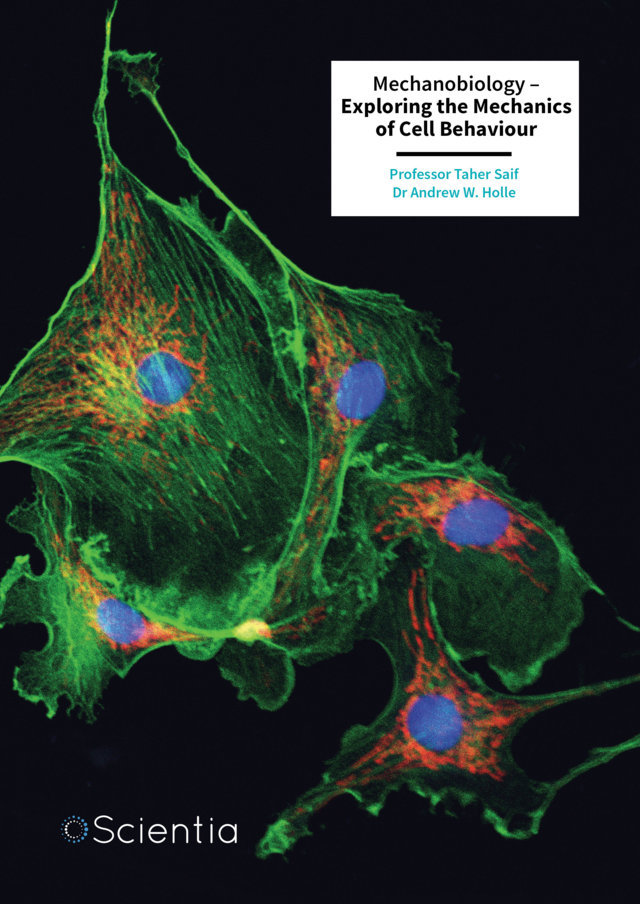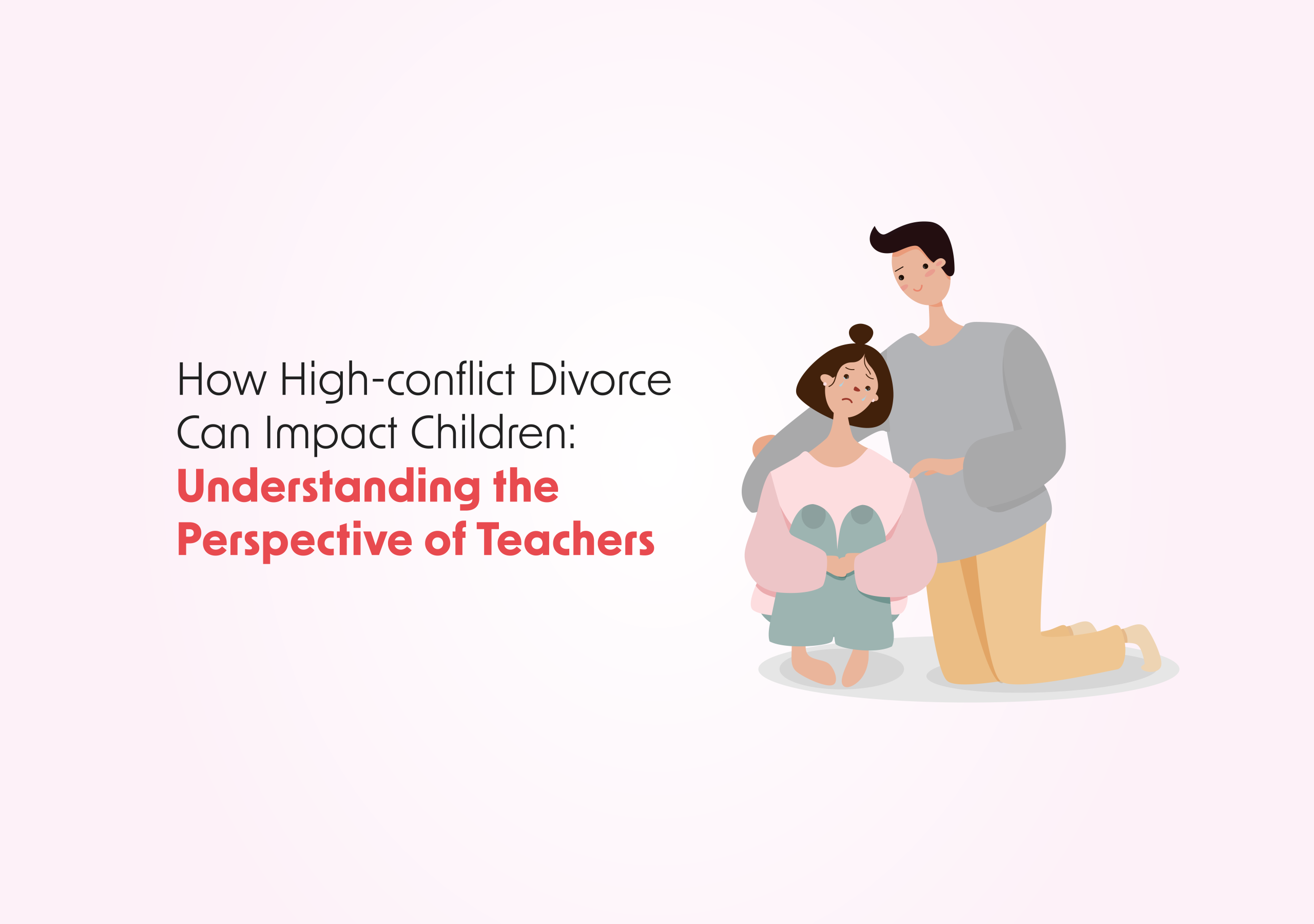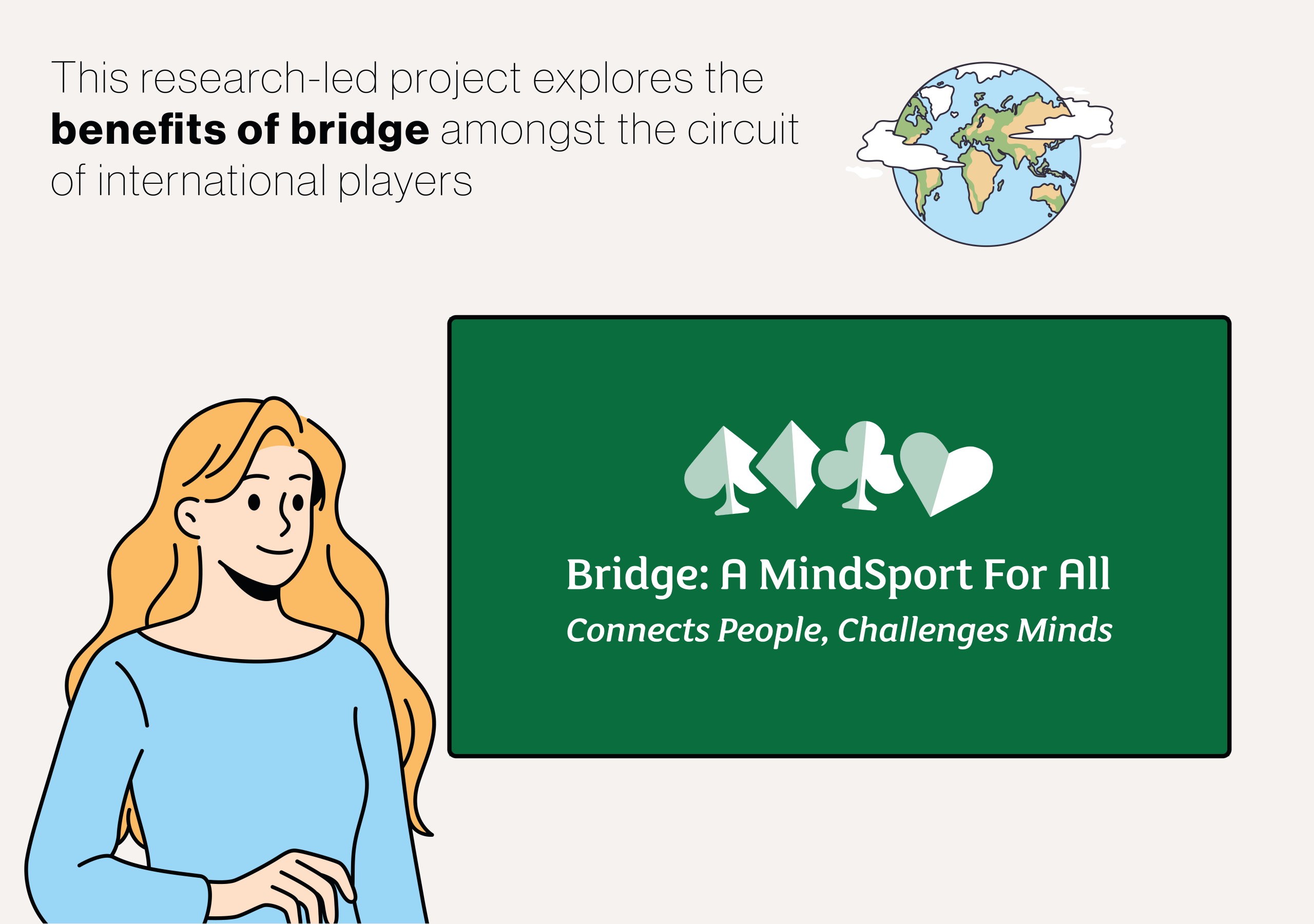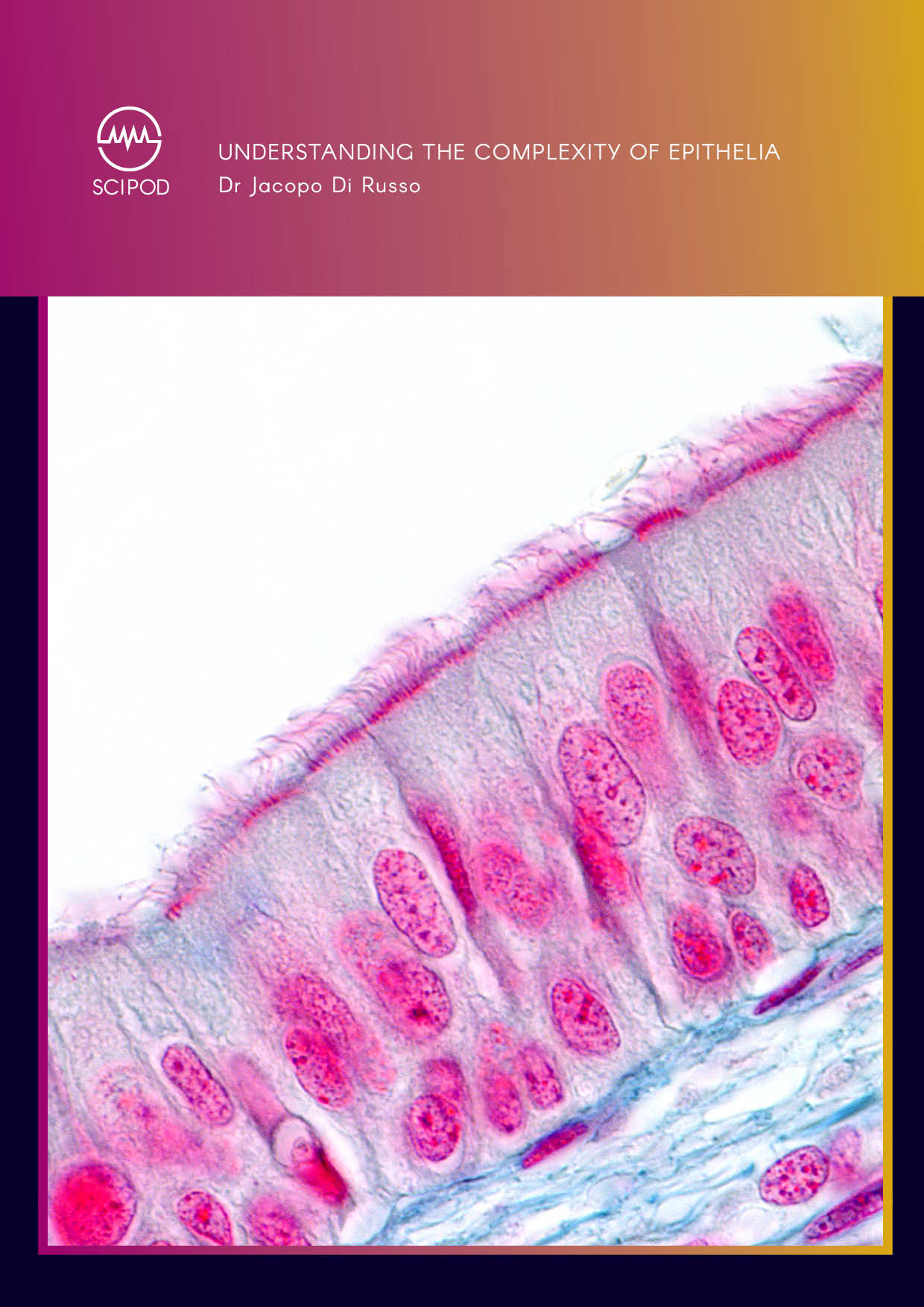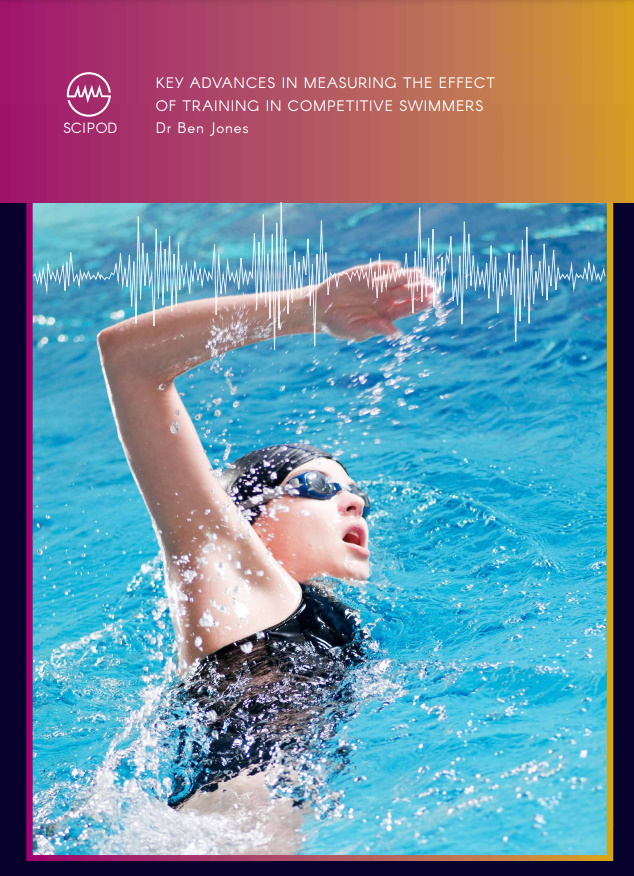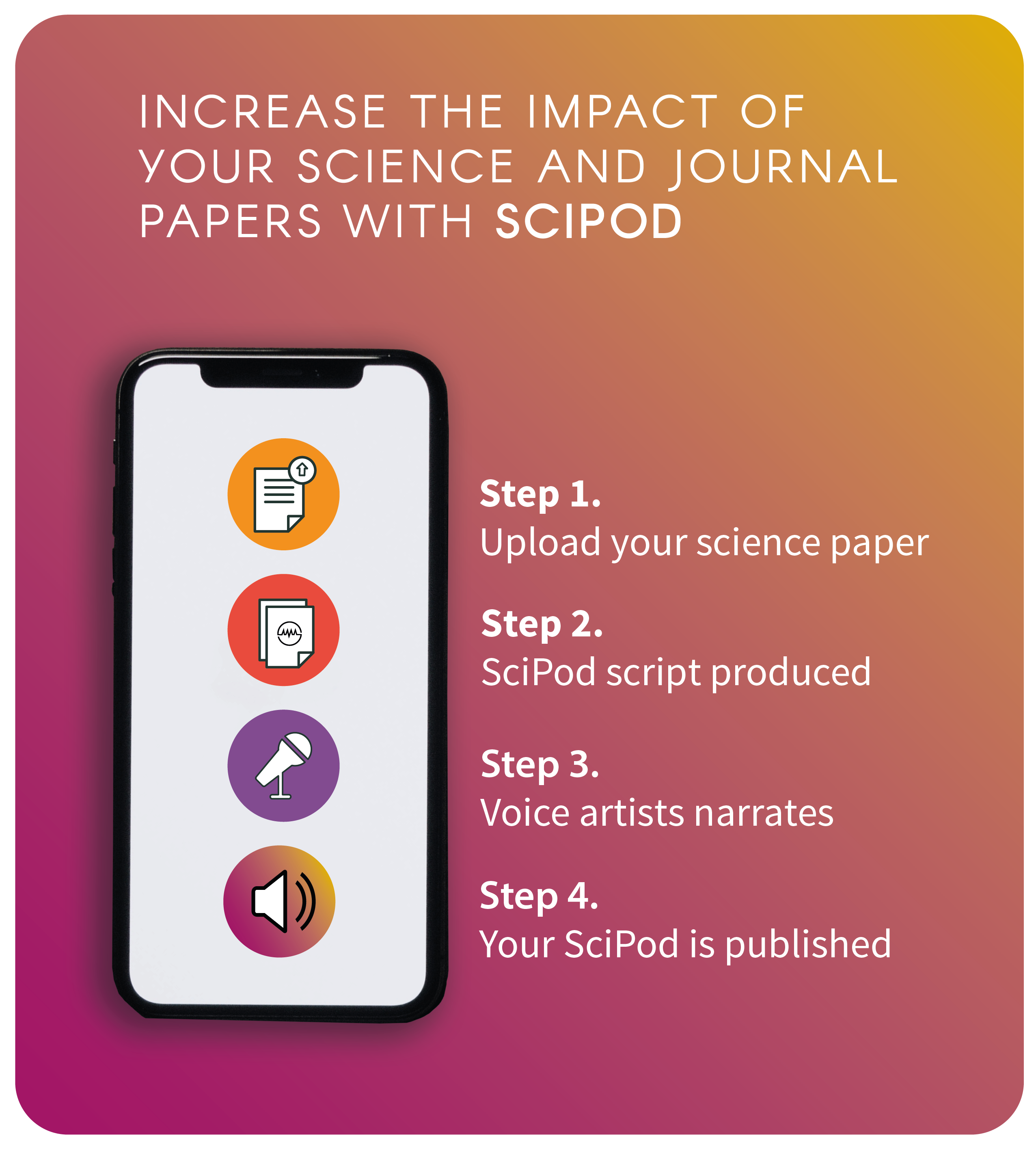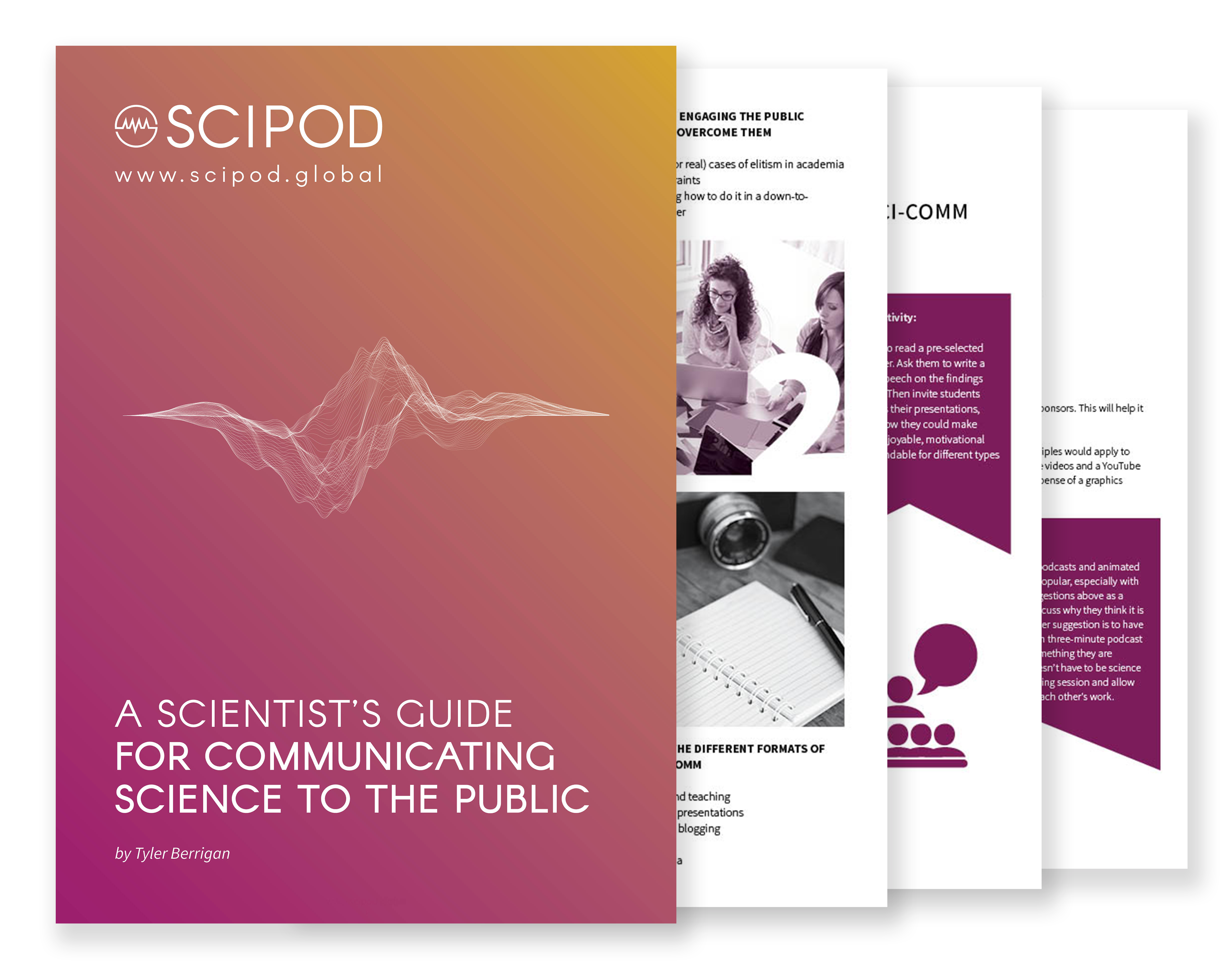Welcome to SciComm Radio
An exclusive interview series with leading scientists and science communicators
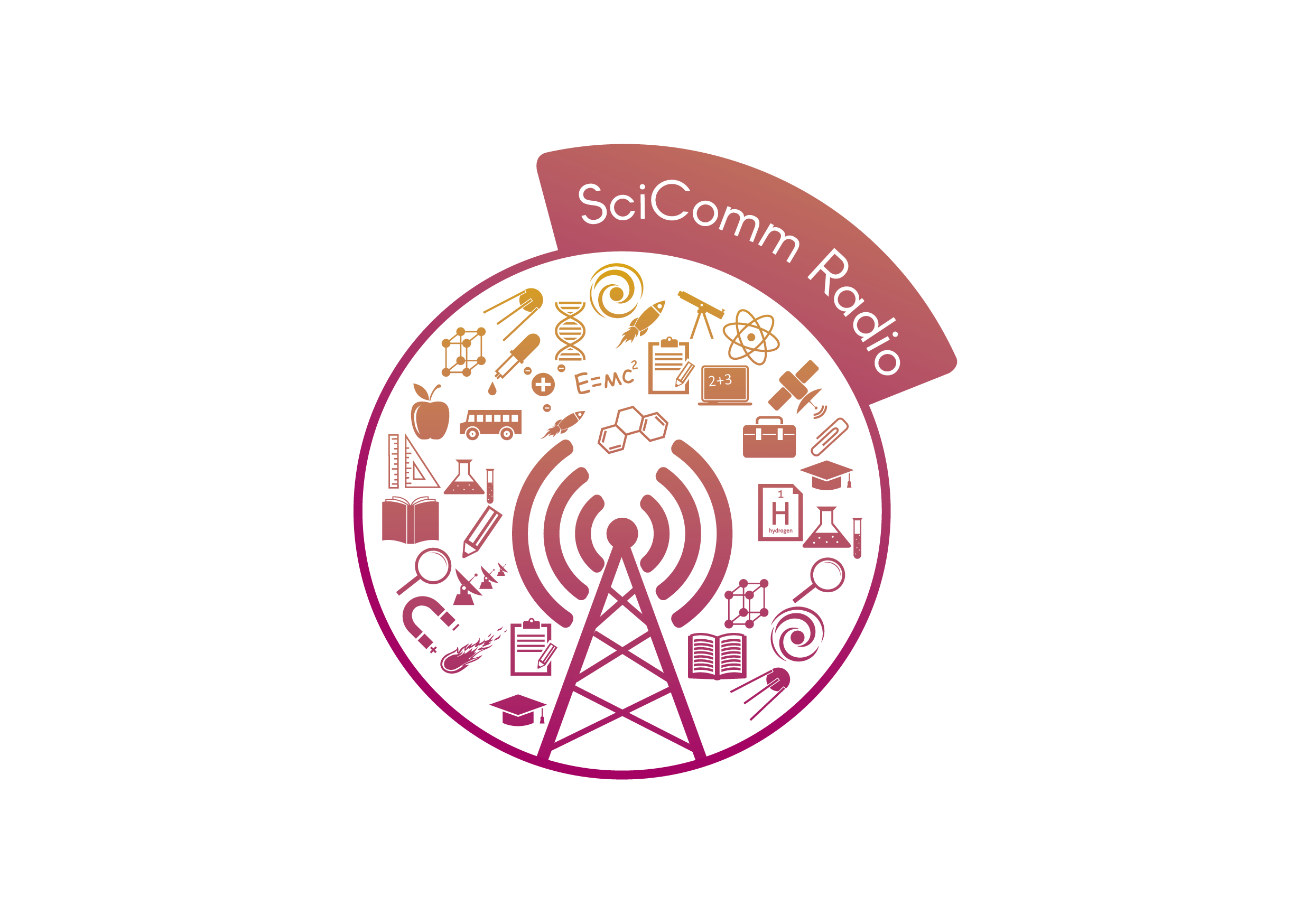
Click Below To Listen To A SciPod Radio Episode
Dr Jennifer Botha – Analysing Bones to Gain Insight into Mammalian Evolution
AudioPod
About this episode
Original Article Reference
This SciPod is a summary of the paper ‘Osteohistology of Late Triassic prozostrodontian cynodonts from Brazil’, from PeerJ. https://doi.org/10.7717/peerj.5029
This work is licensed under a Creative Commons Attribution 4.0 International License. 
What does this mean?
Share: You can copy and redistribute the material in any medium or format
Adapt: You can change, and build upon the material for any purpose, even commercially.
Credit: You must give appropriate credit, provide a link to the license, and indicate if changes were made.
Increase the impact of your research!
More episodes
Dr Dirk Lachenmeier | Avoiding Injury from Hot Food by Determining the Threshold Contact Temperature
Dr Dirk Lachenmeier | Avoiding Injury from Hot Food by Determining the Threshold Contact Temperature
Original Article Reference
This SciPod is a summary of the paper ‘Injury Threshold of Oral Contact with Hot Foods and Method for Its Sensory Evaluation’ published in the journal Safety. DOI: https://doi.org/10.3390/safety4030038
About this episode
Consuming very hot food and beverages poses a risk of oesophageal cancer. Although injury thresholds have been specified in industry standards and guidelines, there remain practical limitations in obtaining an exact measurement of the contact temperature from hot foodstuff in the oral mucosa inside the mouth. Dr Dirk Lachenmeier, a chemist and toxicologist at the Chemical and Veterinary Investigation Agency Karlsruhe, worked in collaboration with his father Dr Walter Lachenmeier, a retired engineer, to develop a new method to estimate the safe surface or consumption temperature of hot food. This has allowed them to make important recommendations.
This work is licensed under a Creative Commons Attribution 4.0 International License. 
What does this mean?
Share: You can copy and redistribute the material in any medium or format
Adapt: You can change, and build upon the material for any purpose, even commercially.
Credit: You must give appropriate credit, provide a link to the license, and indicate if changes were made.
More episodes
Increase the impact of your research
• Good science communication helps people make informed decisions and motivates them to take appropriate and affirmative action.
• Good science communication encourages everyday people to be scientifically literate so that they can analyse the integrity and legitimacy of information.
• Good science communication encourages people into STEM-related fields of study and employment.
• Good public science communication fosters a community around research that includes both members of the public, policymakers and scientists.
• In a recent survey, 75% of people suggested they would prefer to listen to an interesting story than read it.

Step 1 Upload your science paper
Step 2 SciPod script written
Step 3 Voice audio recorded
Step 4 SciPod published
Dr Brett Lidbury | Rethinking Myalgic Encephalomyelitis/Chronic Fatigue Syndrome Using Machine Learning
Dr Brett Lidbury | Rethinking Myalgic Encephalomyelitis/Chronic Fatigue Syndrome Using Machine Learning
Original Article Reference
This SciPod is a summary of the paper ‘Rethinking ME/CFS Diagnostic Reference Intervals via Machine Learning, and the Utility of Activin B for Defining Symptom Severity’, from the journal Diagnostics. DOI: https://doi.org/10.3390/diagnostics9030079
About this episode
This work is licensed under a Creative Commons Attribution 4.0 International License. 
What does this mean?
Share: You can copy and redistribute the material in any medium or format
Adapt: You can change, and build upon the material for any purpose, even commercially.
Credit: You must give appropriate credit, provide a link to the license, and indicate if changes were made.
More episodes
Increase the impact of your research
• Good science communication helps people make informed decisions and motivates them to take appropriate and affirmative action.
• Good science communication encourages everyday people to be scientifically literate so that they can analyse the integrity and legitimacy of information.
• Good science communication encourages people into STEM-related fields of study and employment.
• Good public science communication fosters a community around research that includes both members of the public, policymakers and scientists.
• In a recent survey, 75% of people suggested they would prefer to listen to an interesting story than read it.

Step 1 Upload your science paper
Step 2 SciPod script written
Step 3 Voice audio recorded
Step 4 SciPod published
Dr Zsuzsanna Balogh-Brunstad | Getting to the Root of Plant-Fungi Symbiosis
Dr Zsuzsanna Balogh-Brunstad | Getting to the Root of Plant-Fungi Symbiosis
Original Article Reference
This SciPod is a summary of the paper ‘Ectomycorrhizal Fungi and Mineral Interactions in the Rhizosphere of Scots and Red Pine Seedlings’, in Soils. doi.org/10.3390/soils1010005
About this episode
An ancient relationship between plants and fungi could help us improve forestry and agriculture, while also responding to the challenges posed by climate change. These beneficial fungi, along with their bacteria helpers, help plants to grow bigger and healthier, and survive droughts. An international team of researchers has been investigating how these fungi and bacteria increase mineral availability for Scots pine and red pine seedlings through mineral weathering.
This work is licensed under a Creative Commons Attribution 4.0 International License. 
What does this mean?
Share: You can copy and redistribute the material in any medium or format
Adapt: You can change, and build upon the material for any purpose, even commercially.
Credit: You must give appropriate credit, provide a link to the license, and indicate if changes were made.
More episodes
Increase the impact of your research
• Good science communication helps people make informed decisions and motivates them to take appropriate and affirmative action.
• Good science communication encourages everyday people to be scientifically literate so that they can analyse the integrity and legitimacy of information.
• Good science communication encourages people into STEM-related fields of study and employment.
• Good public science communication fosters a community around research that includes both members of the public, policymakers and scientists.
• In a recent survey, 75% of people suggested they would prefer to listen to an interesting story than read it.

Step 1 Upload your science paper
Step 2 SciPod script written
Step 3 Voice audio recorded
Step 4 SciPod published
Professor John Cayley | Grammalepsy: The Art of Language as Culture Goes Digital
Professor John Cayley | Grammalepsy: The Art of Language as Culture Goes Digital
Original Article Reference
This SciPod is a summary of the chapter ‘At the End of Literature’, from the book Grammalepsy: Essays on Digital Language Art. doi.org/10.7273/hk5k-2350
About this episode
The term literature refers to a wide and diverse range of work, including novels, poems, plays, and essays. While literary experts agree that all literature is composed of language, they often argue about which texts can or should be considered as a part of the literature that we value. In recent years, technological advances have led to the creation of innovative works that merge language with digital media, state-of-the-art technologies and computation itself. In a fascinating book called Grammalepsy, Professor John Cayley of Brown University introduces a new theory of aesthetic linguistic practice that could shed new light on digital literature or, more comprehensively, language art.
This work is licensed under a Creative Commons Attribution 4.0 International License. 
What does this mean?
Share: You can copy and redistribute the material in any medium or format
Adapt: You can change, and build upon the material for any purpose, even commercially.
Credit: You must give appropriate credit, provide a link to the license, and indicate if changes were made.
More episodes
Increase the impact of your research
• Good science communication helps people make informed decisions and motivates them to take appropriate and affirmative action.
• Good science communication encourages everyday people to be scientifically literate so that they can analyse the integrity and legitimacy of information.
• Good science communication encourages people into STEM-related fields of study and employment.
• Good public science communication fosters a community around research that includes both members of the public, policymakers and scientists.
• In a recent survey, 75% of people suggested they would prefer to listen to an interesting story than read it.

Step 1 Upload your science paper
Step 2 SciPod script written
Step 3 Voice audio recorded
Step 4 SciPod published
Dr Michael Schutz | Musical Alarms: Improving Medical Environments by Studying Sound
Dr Michael Schutz | Musical Alarms: Improving Medical Environments by Studying Sound
About this episode
Medical devices in hospitals use auditory interfaces to keep doctors and nurses updated while keeping their eyes focused on patients. These auditory alarms are crucial for complex procedures, such as placing a breathing tube. Unfortunately, the specific sounds used in current systems are highly problematic. The lack of sophistication in these tones render them annoying and distracting, harming communication amongst medical staff and posing risks for patient care. An FDA survey has revealed hundreds of deaths annually resulting from poorly designed alarms! Although there are many ways to improve their use, one solution has received little attention thus far – improving the quality of the sounds themselves.
More episodes
This work is licensed under a Creative Commons Attribution 4.0 International License. 
What does this mean?
Share: You can copy and redistribute the material in any medium or format
Adapt: You can change, and build upon the material for any purpose, even commercially.
Credit: You must give appropriate credit, provide a link to the license, and indicate if changes were made.
Increase the impact of your research
• Good science communication helps people make informed decisions and motivates them to take appropriate and affirmative action.
• Good science communication encourages everyday people to be scientifically literate so that they can analyse the integrity and legitimacy of information.
• Good science communication encourages people into STEM-related fields of study and employment.
• Good public science communication fosters a community around research that includes both members of the public, policymakers and scientists.
• In a recent survey, 75% of people suggested they would prefer to listen to an interesting story than read it.

Step 1 Upload your science paper
Step 2 SciPod script written
Step 3 Voice audio recorded
Step 4 SciPod published
Associate Professor Glen Searle | Exploring How Sydney’s Population Growth Impacts Its Governance
Associate Professor Glen Searle | Exploring How Sydney’s Population Growth Impacts Its Governance
Original Article Reference
This SciPod is a summary of the paper ‘Population growth and development: an outcome of Sydney’s metropolitan governance’, from Australian Planner, 2020. doi.org/10.1080/07293682.2020.1739095
About this episode
Rises in population and demographic changes can have significant effects on the development and governance of urban environments. Associate Professor Glen Searle of the University of Sydney recently published a paper that highlights the ways in which Sydney’s rapid population growth is supported by national immigration targets and the state government’s desire to keep Sydney ahead of other Australian cities as a global city. This population growth then drives important governance decisions at state and national levels, particularly relating to development. By prioritising rapid dwelling construction to accommodate Sydney’s rising population, but lacking adequate funding for new transport, the state government has had to reduce checks and balances needed for more democratic planning and sustainable development.
This work is licensed under a Creative Commons Attribution 4.0 International License. 
What does this mean?
Share: You can copy and redistribute the material in any medium or format
Adapt: You can change, and build upon the material for any purpose, even commercially.
Credit: You must give appropriate credit, provide a link to the license, and indicate if changes were made.
More episodes
Increase the impact of your research
• Good science communication helps people make informed decisions and motivates them to take appropriate and affirmative action.
• Good science communication encourages everyday people to be scientifically literate so that they can analyse the integrity and legitimacy of information.
• Good science communication encourages people into STEM-related fields of study and employment.
• Good public science communication fosters a community around research that includes both members of the public, policymakers and scientists.
• In a recent survey, 75% of people suggested they would prefer to listen to an interesting story than read it.

Step 1 Upload your science paper
Step 2 SciPod script written
Step 3 Voice audio recorded
Step 4 SciPod published
Dr. Marzia Cremona – Using Functional Data Analysis to Better Understand COVID-19 Mortality
Dr. Marzia Cremona – Using Functional Data Analysis to Better Understand COVID-19 Mortality
Original Article Reference
This SciPod is a summary of the paper ‘Functional data analysis characterizes the shapes of the first COVID-19 epidemic wave in Italy’, published in Scientific Reports. DOI: https://doi.org/10.1038/s41598-021-95866-y
About this episode
Italy was the first European country to experience a major outbreak of COVID-19. Across the country, intriguingly different patterns of mortality were seen across regions. Dr. Marzia Cremona from Université Laval, in collaboration with a global team of researchers from the Pennsylvania State University and the Sant’Anna School of Advanced Studies, used novel statistical tools from the field of functional data analysis (FDA) to identify several important factors contributing to these differences. This work has critical implications for policymaking and also demonstrates the useful application of FDA techniques to epidemiological research.
This work is licensed under a Creative Commons Attribution 4.0 International License. 
What does this mean?
Share: You can copy and redistribute the material in any medium or format
Adapt: You can change, and build upon the material for any purpose, even commercially.
Credit: You must give appropriate credit, provide a link to the license, and indicate if changes were made.
More episodes
Increase the impact of your research
• Good science communication helps people make informed decisions and motivates them to take appropriate and affirmative action.
• Good science communication encourages everyday people to be scientifically literate so that they can analyse the integrity and legitimacy of information.
• Good science communication encourages people into STEM-related fields of study and employment.
• Good public science communication fosters a community around research that includes both members of the public, policymakers and scientists.
• In a recent survey, 75% of people suggested they would prefer to listen to an interesting story than read it.

Step 1 Upload your science paper
Step 2 SciPod script written
Step 3 Voice audio recorded
Step 4 SciPod published
Webinar: Get Your Research Heard: Equipment and Technology
Webinar: Get Your Research Heard: Podcast Show Format
Webinar: Get Your Research Heard: How Often Should I Release A New Episode
Webinar: Get Your Research Heard: How Long Should a Podcast Episode be
Webinar: Get Your Research Heard: Naming Your Podcast and Episodes
Webinar: Get Your Research Heard: Plan Your Podcast
Webinar: Get Your Research Heard: How To Get Listeners
Webinar: Improving Science Communication And Impact: How To Get Your Research Heard
Ebook: What is a SciPod?
Dr Surjani Wonorahardjo – Dr Suharti Suharti – Dr I Wayan Dasna | Exploring the Ethics and Environmental Impact of Chemistry
Dr Surjani Wonorahardjo – Dr Suharti Suharti – Dr I Wayan Dasna | Exploring the Ethics and Environmental Impact of Chemistry
Original Article Reference
This SciPod is a summary of the paper ‘From Chemistry Back to Nature, an Ethical Perception of Chemists’, from The 4th International Conference on Mathematics and Science Education (ICoMSE). https://doi.org/10.1063/5.0043206
About this episode
From its early days, the field of chemistry has been exploring nature at the molecular level. As such, chemistry is also used to explore natural resources and possible ways of exploiting them. As Earth’s environment is now rapidly deteriorating, chemists need to adapt their practices with the aim of contributing to its protection. Dr Surjani Wonorahardjo, Dr Suharti Suharti and Dr I Wayan Dasna, three researchers in Indonesia, have recently conducted a study exploring the ethical and environmental issues associated with current chemistry practices, in the hope to inspire reflection and positive change in the field.
This work is licensed under a Creative Commons Attribution 4.0 International License. 
What does this mean?
Share: You can copy and redistribute the material in any medium or format
Adapt: You can change, and build upon the material for any purpose, even commercially.
Credit: You must give appropriate credit, provide a link to the license, and indicate if changes were made.
More episodes
Increase the impact of your research
• Good science communication helps people make informed decisions and motivates them to take appropriate and affirmative action.
• Good science communication encourages everyday people to be scientifically literate so that they can analyse the integrity and legitimacy of information.
• Good science communication encourages people into STEM-related fields of study and employment.
• Good public science communication fosters a community around research that includes both members of the public, policymakers and scientists.
• In a recent survey, 75% of people suggested they would prefer to listen to an interesting story than read it.

Step 1 Upload your science paper
Step 2 SciPod script written
Step 3 Voice audio recorded
Step 4 SciPod published
Dr Laura Tipton | Symbiotic Science through a Shared Language
Dr Laura Tipton | Symbiotic Science through a Shared Language
Original Article Reference
This SciPod is a summary of the paper ‘A Developing Symbiosis: Enabling Cross-Talk Between Ecologists and Microbiome Scientists’, in Frontiers in Microbiology. doi.org/10.3389/fmicb.2019.00292
About this episode
Many scientific concepts are applicable to multiple disciplines and across spatial scales, from the microscopic to the global. As such, scientists from different disciplines must communicate effectively – through a shared scientific language – for effective collaboration and scientific advancement. With this aim, Dr Laura Tipton of Chaminade University and her colleagues from the University of Hawai’i investigate the history of ecological terminology, in order to work towards building a common lexicon that bridges ecology and microbiome science.
This work is licensed under a Creative Commons Attribution 4.0 International License. 
What does this mean?
Share: You can copy and redistribute the material in any medium or format
Adapt: You can change, and build upon the material for any purpose, even commercially.
Credit: You must give appropriate credit, provide a link to the license, and indicate if changes were made.
More episodes
Increase the impact of your research
• Good science communication helps people make informed decisions and motivates them to take appropriate and affirmative action.
• Good science communication encourages everyday people to be scientifically literate so that they can analyse the integrity and legitimacy of information.
• Good science communication encourages people into STEM-related fields of study and employment.
• Good public science communication fosters a community around research that includes both members of the public, policymakers and scientists.
• In a recent survey, 75% of people suggested they would prefer to listen to an interesting story than read it.

Step 1 Upload your science paper
Step 2 SciPod script written
Step 3 Voice audio recorded
Step 4 SciPod published
Dr Gabrielle Gold-von Simson | The Biomedical Entrepreneurship Skills Development Program (BEEP): Educating a New Generation of Medical Innovators
Dr Gabrielle Gold-von Simson | The Biomedical Entrepreneurship Skills Development Program (BEEP): Educating a New Generation of Medical Innovators
Original Article Reference
This SciPod is a summary of https://doi.org/10.33548/SCIENTIA815
About this episode
Innovative, new technologies are rapidly being introduced into the medical world, as scientists and inventors continually discover solutions to all kinds of health issues. However, comprehensive education in medical product development, business process and strategy is distinctly lacking for science students who aspire to become commercial medical innovators and entrepreneurs. Entrepreneurially minded professionals at the New York University Grossman School of Medicine developed, implemented, and integrated programs to train early scientists in the business side of science to accelerate the pace of commercialisation and encourage individuals to pursue venture creation and entrepreneurship to impact highly relevant healthcare solutions.
This work is licensed under a Creative Commons Attribution 4.0 International License. 
What does this mean?
Share: You can copy and redistribute the material in any medium or format
Adapt: You can change, and build upon the material for any purpose, even commercially.
Credit: You must give appropriate credit, provide a link to the license, and indicate if changes were made.
More episodes
Increase the impact of your research
• Good science communication helps people make informed decisions and motivates them to take appropriate and affirmative action.
• Good science communication encourages everyday people to be scientifically literate so that they can analyse the integrity and legitimacy of information.
• Good science communication encourages people into STEM-related fields of study and employment.
• Good public science communication fosters a community around research that includes both members of the public, policymakers and scientists.
• In a recent survey, 75% of people suggested they would prefer to listen to an interesting story than read it.

Step 1 Upload your science paper
Step 2 SciPod script written
Step 3 Voice audio recorded
Step 4 SciPod published
Dr Pal Bela Szecsi | Changes in Maternal Vitamin D Levels Throughout Pregnancy and Across the Seasons
Dr Pal Bela Szecsi | Changes in Maternal Vitamin D Levels Throughout Pregnancy and Across the Seasons
Original Article Reference
This SciPod is a summary of the paper ‘Variation in plasma 25-hydroxyvitamin D2 and D3 in normal pregnancy with gestational age, sampling season, and complications: A longitudinal cohort study’ from PLOS One. DOI: https://doi.org/10.1371/journal.pone.0231657
About this episode
Maternal nutrition plays a major role in reducing pregnancy complications and improving infant and child health. Vitamin D is important during pregnancy as it helps the baby’s heart, bones, teeth and nervous system develop properly. Low levels of vitamin D in pregnancy have been linked to a number of problems and conditions. Dr Pal Bela Szecsi and his team at Copenhagen University Hospital in Denmark have been investigating vitamin D concentrations throughout normal pregnancy and in relation to possible complications.
This work is licensed under a Creative Commons Attribution 4.0 International License. 
What does this mean?
Share: You can copy and redistribute the material in any medium or format
Adapt: You can change, and build upon the material for any purpose, even commercially.
Credit: You must give appropriate credit, provide a link to the license, and indicate if changes were made.
More episodes
Increase the impact of your research
• Good science communication helps people make informed decisions and motivates them to take appropriate and affirmative action.
• Good science communication encourages everyday people to be scientifically literate so that they can analyse the integrity and legitimacy of information.
• Good science communication encourages people into STEM-related fields of study and employment.
• Good public science communication fosters a community around research that includes both members of the public, policymakers and scientists.
• In a recent survey, 75% of people suggested they would prefer to listen to an interesting story than read it.

Step 1 Upload your science paper
Step 2 SciPod script written
Step 3 Voice audio recorded
Step 4 SciPod published
Dr Helen Greenwood Hansma | Energy: A Clue to the Origins of Life
Dr Helen Greenwood Hansma | Energy: A Clue to the Origins of Life
Original Article Reference
This SciPod is a summary of the paper ‘Mechanical Energy before Chemical Energy at the Origins of Life?’, in Sci. https://doi.org/10.3390/sci2040088 & https://doi.org/10.1016/j.bpj.2022.08.032
About this episode
Energy is vital for life. It allows important functions to occur in living systems, from the molecular level to the scale of the whole organism. Dr Helen Greenwood Hansma, from the University of California in Santa Barbara, believes that the types of energy used in living cells can provide clues to help us understand the origins of life. In her recent research, she explores how mechanical energy could have driven the processes that gave rise to early life in the absence of chemical energy.
This work is licensed under a Creative Commons Attribution 4.0 International License. 
What does this mean?
Share: You can copy and redistribute the material in any medium or format
Adapt: You can change, and build upon the material for any purpose, even commercially.
Credit: You must give appropriate credit, provide a link to the license, and indicate if changes were made.
More episodes
Increase the impact of your research
• Good science communication helps people make informed decisions and motivates them to take appropriate and affirmative action.
• Good science communication encourages everyday people to be scientifically literate so that they can analyse the integrity and legitimacy of information.
• Good science communication encourages people into STEM-related fields of study and employment.
• Good public science communication fosters a community around research that includes both members of the public, policymakers and scientists.
• In a recent survey, 75% of people suggested they would prefer to listen to an interesting story than read it.

Step 1 Upload your science paper
Step 2 SciPod script written
Step 3 Voice audio recorded
Step 4 SciPod published
Dr Tabe Bergman – Reflecting on Responsibility, Intent and Conformism Among Journalists
Dr Tabe Bergman – Reflecting on Responsibility, Intent and Conformism Among Journalists
Original Article Reference
This SciPod is a summary of the paper ‘Manufacturing foreign news from afar: views from an editor’s desk’, from the Journal of Applied Journalism & Media Studies. https://doi.org/10.1386/ajms_00078_1
About this episode
Herman and Chomsky’s propaganda model is among the most renowned academic contributions to the study of journalism. Although it offers valuable insight into news content and how the media industry operates, it mostly ignores an important step in the production of news: what happens in the newsroom. Dr Tabe Bergman, an Assistant Professor at Xi’an Jiaotong-Liverpool University and Deputy Head of the University’s Media and Communication department, recently assessed practices in the newsroom, with the aim to supplement the propaganda model.
This work is licensed under a Creative Commons Attribution 4.0 International License. 
What does this mean?
Share: You can copy and redistribute the material in any medium or format
Adapt: You can change, and build upon the material for any purpose, even commercially.
Credit: You must give appropriate credit, provide a link to the license, and indicate if changes were made.
More episodes
Increase the impact of your research
• Good science communication helps people make informed decisions and motivates them to take appropriate and affirmative action.
• Good science communication encourages everyday people to be scientifically literate so that they can analyse the integrity and legitimacy of information.
• Good science communication encourages people into STEM-related fields of study and employment.
• Good public science communication fosters a community around research that includes both members of the public, policymakers and scientists.
• In a recent survey, 75% of people suggested they would prefer to listen to an interesting story than read it.

Step 1 Upload your science paper
Step 2 SciPod script written
Step 3 Voice audio recorded
Step 4 SciPod published
Dr Samantha Dolan – Investigating Facilitators and Barriers to Electronic Immunisation Registry Implementation in Tanzania and Zambia
Dr Samantha Dolan – Investigating Facilitators and Barriers to Electronic Immunisation Registry Implementation in Tanzania and Zambia
Original Article Reference
This SciPod is a summary of the paper ‘Perceptions of factors influencing the introduction and adoption of electronic immunization registries in Tanzania and Zambia: a mixed methods study’, published in Implementation Science Communications. DOI: https://doi.org/10.1186/s43058-020-00022-8
About this episode
Digital health interventions have the potential to revolutionalise the management of health information. Despite reduced costs and increased accessibility of technology across the world, the implementation of digital health technologies in low- and middle-income countries has been less than optimal. Dr Samantha Dolan at PATH and the University of Washington and her colleagues investigated the perceived facilitators and barriers to electronic immunisation registry implementation in Tanzania and Zambia, and provide important recommendations for future practice.
This work is licensed under a Creative Commons Attribution 4.0 International License. 
What does this mean?
Share: You can copy and redistribute the material in any medium or format
Adapt: You can change, and build upon the material for any purpose, even commercially.
Credit: You must give appropriate credit, provide a link to the license, and indicate if changes were made.
More episodes
Increase the impact of your research
• Good science communication helps people make informed decisions and motivates them to take appropriate and affirmative action.
• Good science communication encourages everyday people to be scientifically literate so that they can analyse the integrity and legitimacy of information.
• Good science communication encourages people into STEM-related fields of study and employment.
• Good public science communication fosters a community around research that includes both members of the public, policymakers and scientists.
• In a recent survey, 75% of people suggested they would prefer to listen to an interesting story than read it.

Step 1 Upload your science paper
Step 2 SciPod script written
Step 3 Voice audio recorded
Step 4 SciPod published
Dr Ruth MacKinnon – Genome Organisation and Centromeres and the Evolution of Cancerous Cell Lines
Dr Ruth MacKinnon – Genome Organisation and Centromeres and the Evolution of Cancerous Cell Lines
Original Article Reference
This SciPod is a summary of the papers ‘Genome organization and the role of centromeres in evolution of the erythroleukemia cell line HEL’ from Evolution, Medicine, and Public Health. DOI: 10.1093/emph/eot020, and ‘Detailed molecular cytogenetic characterisation of the myeloid cell line U937 reveals the fate of homologous chromosomes and shows that centromere capture is a feature of genome instability’ from Molecular Cytogenetics. DOI: https://doi.org/10.1186/s13039-020-00517-y
About this episode
There are over 3,600 established cell lines from 150 different species that can be used for scientific and medical research. In two recent studies, Dr Ruth MacKinnon and her team from St Vincent’s Hospital in Melbourne used multiple molecular methods to investigate changes in the way the genes are organised in two types of these cells. They demonstrated the importance of using multiple complementary methods and found that these cells can continue to evolve in the laboratory. They also uncovered evidence of a previously unreported process called ‘centromere capture’ which may be involved in the evolution of cancer cells.
This work is licensed under a Creative Commons Attribution 4.0 International License. 
What does this mean?
Share: You can copy and redistribute the material in any medium or format
Adapt: You can change, and build upon the material for any purpose, even commercially.
Credit: You must give appropriate credit, provide a link to the license, and indicate if changes were made.
More episodes
Increase the impact of your research
• Good science communication helps people make informed decisions and motivates them to take appropriate and affirmative action.
• Good science communication encourages everyday people to be scientifically literate so that they can analyse the integrity and legitimacy of information.
• Good science communication encourages people into STEM-related fields of study and employment.
• Good public science communication fosters a community around research that includes both members of the public, policymakers and scientists.
• In a recent survey, 75% of people suggested they would prefer to listen to an interesting story than read it.

Step 1 Upload your science paper
Step 2 SciPod script written
Step 3 Voice audio recorded
Step 4 SciPod published
Exploring the Link Between Managers’ Motivation and Education
Exploring the Link Between Managers’ Motivation and Education
Original Article Reference
This SciPod is a summary of the paper ‘Is it really hard to motivate those who are not highly educated? Empirical evidence from a semi-parametric analysis’, in Applied Economics. https://doi.org/10.1080/00036846.2021.1934394
About this episode
In recent years, many researchers have been investigating the associations between wage, education, and productivity, to gather valuable insight that could guide business decision-making. Professor Qiao Wang at Capital University of Economics and Business in Beijing has recently carried out a study specifically exploring the possibility that the motivation and productivity of business managers could be affected by their levels of education.
This work is licensed under a Creative Commons Attribution 4.0 International License. 
What does this mean?
Share: You can copy and redistribute the material in any medium or format
Adapt: You can change, and build upon the material for any purpose, even commercially.
Credit: You must give appropriate credit, provide a link to the license, and indicate if changes were made.
More episodes
Increase the impact of your research
• Good science communication helps people make informed decisions and motivates them to take appropriate and affirmative action.
• Good science communication encourages everyday people to be scientifically literate so that they can analyse the integrity and legitimacy of information.
• Good science communication encourages people into STEM-related fields of study and employment.
• Good public science communication fosters a community around research that includes both members of the public, policymakers and scientists.
• In a recent survey, 75% of people suggested they would prefer to listen to an interesting story than read it.

Step 1 Upload your science paper
Step 2 SciPod script written
Step 3 Voice audio recorded
Step 4 SciPod published
Investigating the Impact of Tannins on Gut Bacteria in Pigs
Investigating the Impact of Tannins on Gut Bacteria in Pigs
Original Article Reference
This SciPod is a summary of the paper ‘A mixture of quebracho and chestnut tannins drives butyrate-producing bacteria populations shift in the guy microbiota of weaned piglets’ from the open access journal, PLOS One. DOI: https://doi.org/10.1371/journal.pone.0250874
About this episode
Weaning is an important time in the pig lifecycle, and changes in diet and environment can lead to unbalanced gut microbiota and pathogen colonisation. Prof. Luciana Rossi, Dr. Matteo Dell’Anno from the University of Milan, and Dr. Maria Luisa Callegari from Catholic University of Sacred Heart, have been investigating the impact on gut bacteria of adding natural compounds known as tannins to piglet food. Importantly, they found that tannins do affect the gut bacteria; with increases seen in bacteria associated with improved growth and gut health, and in particular, those that produce butyrate – a substance with proven health benefits.
This work is licensed under a Creative Commons Attribution 4.0 International License. 
What does this mean?
Share: You can copy and redistribute the material in any medium or format
Adapt: You can change, and build upon the material for any purpose, even commercially.
Credit: You must give appropriate credit, provide a link to the license, and indicate if changes were made.
More episodes
Increase the impact of your research
• Good science communication helps people make informed decisions and motivates them to take appropriate and affirmative action.
• Good science communication encourages everyday people to be scientifically literate so that they can analyse the integrity and legitimacy of information.
• Good science communication encourages people into STEM-related fields of study and employment.
• Good public science communication fosters a community around research that includes both members of the public, policymakers and scientists.
• In a recent survey, 75% of people suggested they would prefer to listen to an interesting story than read it.

Step 1 Upload your science paper
Step 2 SciPod script written
Step 3 Voice audio recorded
Step 4 SciPod published
Dr Darren Sharpe, University of East London – Cultivating Young People’s Empowerment and Participation in Society
VideoPod
About this episode
Young people are central to a country’s growth and development, as they bring fresh perspectives and innovation. However, the path towards gaining full inclusion in society can be arduous for many youths, particularly those from marginalised and disadvantaged backgrounds.
Original Article Reference
Summary of the paper ‘The Making of Democratic Actors: Counting the Costs of Public Cuts in England on Young People’s Steps towards Citizenship’, https://doi.org/10.3390/soc8040111
This work is licensed under a Creative Commons Attribution 4.0 International License. 
What does this mean?
Share: You can copy and redistribute the material in any medium or format
Adapt: You can change, and build upon the material for any purpose, even commercially.
Credit: You must give appropriate credit, provide a link to the license, and indicate if changes were made.
Increase the impact of your research!
More episodes
Dr Jacopo Di Russo – Understanding the Complexity of Epithelia
Dr Jacopo Di Russo – Understanding the Complexity of Epithelia
Original Article Reference
This SciPod is a summary of the paper ‘Mechanobiology of Epithelia From the Perspective of Extracellular Matrix Heterogeneity’, from Frontiers in Bioengineering and Biotechnology. DOI: https://doi.org/10.3389/fbioe.2020.596599.
About this episode
Epithelial tissue is a protective layer of cells bound together into thin sheets that coat the internal and external surfaces of major body organs. The largest is the epidermis – the outer layer of the skin. This sheet-like structure is integral to its function and is maintained by a complex scaffolding network called the extracellular matrix (ECM). Dr Jacopo Di Russo and his colleagues at the Interdisciplinary Centre for Clinical Research of the University Hospital of Aachen, Germany, have recently discussed the diverse nature of the ECM and its hugely unmet potential within bioengineering.
This work is licensed under a Creative Commons Attribution 4.0 International License. 
What does this mean?
Share: You can copy and redistribute the material in any medium or format
Adapt: You can change, and build upon the material for any purpose, even commercially.
Credit: You must give appropriate credit, provide a link to the license, and indicate if changes were made.
More episodes
Increase the impact of your research
• Good science communication helps people make informed decisions and motivates them to take appropriate and affirmative action.
• Good science communication encourages everyday people to be scientifically literate so that they can analyse the integrity and legitimacy of information.
• Good science communication encourages people into STEM-related fields of study and employment.
• Good public science communication fosters a community around research that includes both members of the public, policymakers and scientists.
• In a recent survey, 75% of people suggested they would prefer to listen to an interesting story than read it.

Step 1 Upload your science paper
Step 2 SciPod script written
Step 3 Voice audio recorded
Step 4 SciPod published
Dr Ben Jones – Key Advances in Measuring the Effect of Training in Competitive Swimmers
Dr Ben Jones – Key Advances in Measuring the Effect of Training in Competitive Swimmers
Original Article Reference
This SciPod is a summary of the paper ‘Underwater near-infrared spectroscopy can measure training adaptations in adolescent swimmers’, from PeerJ. DOI: https://doi.org/10.7717/peerj.4393
About this episode
Swimming was one of the nine original Olympic sports in 1896, and to this day, remains one of the most popular competitive and recreational sports. However, methods to track the effect of training programmes and physiological changes in swimmers have lagged behind those of other sports due to difficulties caused by the aquatic environment. Dr Ben Jones and his team from the University of Essex have used a novel underwater near infrared spectrometer to monitor the effects of a training programme on muscle oxygenation in teenage swimmers.
This work is licensed under a Creative Commons Attribution 4.0 International License. 
What does this mean?
Share: You can copy and redistribute the material in any medium or format
Adapt: You can change, and build upon the material for any purpose, even commercially.
Credit: You must give appropriate credit, provide a link to the license, and indicate if changes were made.
More episodes
Increase the impact of your research
• Good science communication helps people make informed decisions and motivates them to take appropriate and affirmative action.
• Good science communication encourages everyday people to be scientifically literate so that they can analyse the integrity and legitimacy of information.
• Good science communication encourages people into STEM-related fields of study and employment.
• Good public science communication fosters a community around research that includes both members of the public, policymakers and scientists.
• In a recent survey, 75% of people suggested they would prefer to listen to an interesting story than read it.

Step 1 Upload your science paper
Step 2 SciPod script written
Step 3 Voice audio recorded
Step 4 SciPod published

